New Shepard is a fully reusable rocket launching a new generation of astronauts.

Launch to space on a rocket
Named for Alan Shepard, the first U.S. astronaut, New Shepard launches from the high West Texas desert. On your 11-minute flight, you'll travel over 3X the speed of sound to pass the Kármán Line at 100 km (62 mi), float weightless for several minutes, and witness life-changing views of Earth before descending gently under parachutes.
A fully reusable booster
New Shepard is 100% reusable and fully autonomous. The booster and capsule are designed to launch more than 25 times. The high-performing engine runs clean with water vapor as the only exhaust, and no carbon emissions.
The Capsule
See Earth from your own epic window seat
With room for six astronauts, the spacious and pressurized cabin is climate-controlled for your comfort. Every passenger gets their own window seat for unprecedented views of Earth. The windows comprise over one third of the capsule's surface area.
Flight Training
Fully train for flight in just two days
While onsite you'll learn everything you need for a safe and life-changing space flight. You and your crew will meet the rocket up close, experience missions in the capsule simulator, and learn about safety and zero-g protocols for your weightless journey.
Your journey begins at Launch Site One
Nestled in the Guadalupe Mountains, two hours east of El Paso, Launch Site One sits on the historic Figure 2 Ranch near Van Horn, Texas. You and your crew will stay onsite at the Astronaut Village. Spectacular sunrises, sunsets, and stargazing abound. This is where your dreams of reaching space will become a reality.
Commitment to Safety
22 successful flights, 22 safe landings
Blue Origin has been flight testing the New Shepard rocket and its triple-redundant safety systems since 2012. The program has had 22 successful consecutive missions including three successful capsule escape tests, demonstrating the crew escape system can activate safely in any phase of flight.
What Astronauts Say
Hear what it's like from our astronauts
New Shepard has launched both the oldest and youngest people ever to go to space, William Shatner and Oliver Daemen. Hear from Oliver as he recalls his life changing experience aboard New Shepard.
It's your time. Join the new generation of astronauts.
© 2007 - 2023 Blue Origin, All Rights Reserved.
Space Tourism: Can A Civilian Go To Space?

2021 has been a busy year for private space tourism: overall, more than 15 civilians took a trip to space during this year. In this article, you will learn more about the space tourism industry, its history, and the companies that are most likely to make you a space tourist.
What is space tourism?
Brief history of space tourism, space tourism companies, orbital and suborbital space flights, how much does it cost for a person to go to space, is space tourism worth it, can i become a space tourist, why is space tourism bad for the environment.
Space tourism is human space travel for recreational or leisure purposes . It’s divided into different types, including orbital, suborbital, and lunar space tourism.
However, there are broader definitions for space tourism. According to the Space Tourism Guide , space tourism is a commercial activity related to space that includes going to space as a tourist, watching a rocket launch, going stargazing, or traveling to a space-focused destination.
The first space tourist was Dennis Tito, an American multimillionaire, who spent nearly eight days onboard the International Space Station in April 2001. This trip cost him $20 million and made Tito the first private citizen who purchased his space ticket. Over the next eight years, six more private citizens followed Tito to the International Space Station to become space tourists.
As space tourism became a real thing, dozens of companies entered this industry hoping to capitalize on renewed public interest in space, including Blue Origin in 2000 and Virgin Galactic in 2004. In the 2000s, space tourists were limited to launches aboard Russian Soyuz aircraft and only could go to the ISS. However, everything changed when the other players started to grow up on the market. There are now a variety of destinations and companies for travels to space.
There are now six major space companies that are arranging or planning to arrange touristic flights to space:
- Virgin Galactic;
- Blue Origin;
- Axiom Space;
- Space Perspective.
While the first two are focused on suborbital flights, Axiom and Boeing are working on orbital missions. SpaceX, in its turn, is prioritizing lunar tourism in the future. For now, Elon Musk’s company has allowed its Crew Dragon spacecraft to be chartered for orbital flights, as it happened with the Inspiration4 3-day mission . Space Perspective is developing a different balloon-based system to carry customers to the stratosphere and is planning to start its commercial flights in 2024.
Orbital and suborbital flights are very different. Taking an orbital flight means staying in orbit; in other words, going around the planet continually at a very high speed to not fall back to the Earth. Such a trip takes several days, even a week or more. A suborbital flight in its turn is more like a space hop — you blast off, make a huge arc, and eventually fall back to the Earth, never making it into orbit. A flight duration, in this case, ranges from 2 to 3 hours.
Here is an example: a spaceflight takes you to an altitude of 100 km above the Earth. To enter into orbit — make an orbital flight — you would have to gain a speed of about 28,000 km per hour (17,400 mph) or more. But to reach the given altitude and fall back to the Earth — make a suborbital flight — you would have to fly at only 6,000 km per hour (3,700 mph). This flight takes less energy, less fuel; therefore, it is less expensive.
- Virgin Galactic: $250,000 for a 2-hour suborbital flight at an altitude of 80 km;
- Blue Origin: approximately $300,000 for 12 minutes suborbital flight at an altitude of 100 km;
- Axiom Space: $55 million for a 10-day orbital flight;
- Space Perspective: $125,000 for a 6-hour flight to the edge of space (32 km above the Earth).
The price depends, but remember that suborbital space flights are always cheaper.
What exactly do you expect from a journey to space? Besides the awesome impressions, here is what you can experience during such a trip:
- Weightlessness . Keep in mind that during a suborbital flight you’ll get only a couple of minutes in weightlessness, but it will be truly fascinating .
- Space sickness . The symptoms include cold sweating, malaise, loss of appetite, nausea, fatigue, and vomiting. Even experienced astronauts are not immune from it!
- G-force . 1G is the acceleration we feel due to the force of gravity; a usual g-force astronauts experience during a rocket launch is around 3gs. To understand how a g-force influences people , watch this video.
For now, the most significant barrier for space tourism is price. But air travel was also once expensive; a one-way ticket cost more than half the price of a new car . Most likely, the price for space travel will reduce overtime as well. For now, you need to be either quite wealthy or win in a competition, as did Sian Proctor, a member of Inspiration4 mission . But before spending thousands of dollars on space travel, here is one more fact you might want to consider.
Rocket launches are harmful to the environment in general. During the burning of rocket fuels, rocket engines release harmful gases and soot particles (also known as black carbon) into the upper atmosphere, resulting in ozone depletion. Think about this: in 2018 black-carbon-producing rockets emitted about the same amount of black carbon as the global aviation industry emits annually.
However, not all space companies use black carbon for fuel. Blue Origin’s New Shepard rocket has a liquid hydrogen-fuelled engine: hydrogen doesn’t emit carbon but simply turns into water vapor when burning.
The main reason why space tourism could be harmful to the environment is its potential popularity. With the rising amount of rocket launches the carbon footprint will only increase — Virgin Galactic alone aims to launch 400 of these flights annually. Meanwhile, the soot released by 1,000 space tourism flights could warm Antarctica by nearly 1°C !
Would you want to become a space tourist? Let us know your opinion on social media and share the article with your friends, if you enjoyed it! Also, the Best Mobile App Awards 2021 is going on right now, and we would very much appreciate it if you would vote for our Sky Tonight app . Simply tap "Vote for this app" in the upper part of the screen. No registration is required!
- Search Please fill out this field.
- Manage Your Subscription
- Give a Gift Subscription
- Sweepstakes
- Space Travel + Astronomy
13 Things Tourists Should Know Before Traveling to Space, According to Astronauts
We asked the pros for their best tips on handling a first trip to space.
:max_bytes(150000):strip_icc():format(webp)/Stefanie-Waldek-7eed18a8c9734cb28c5d887eb583f816.jpg)
For most of human spaceflight history, those lucky enough to reach the stars were professional astronauts hired and trained by government agencies around the world. But since the early 2000s, when seven intrepid travelers paid millions to spend a few days aboard the International Space Station (ISS), space tourism has begun to take off. We're now on the cusp of a new era of space exploration, with commercial companies like Virgin Galactic and Blue Origin launching spacecraft capable of taking paying travelers beyond the Earth's surface.
We spoke with former NASA astronauts Leroy Chiao and Scott Parazynski to get their tips for first-time spaceflight participants. During his 15 years with NASA, Chiao participated in four missions — three aboard the space shuttle and one to the ISS, in which he served as commander. Parazynski worked at NASA for 17 years, flying five shuttle missions throughout his career. Read on to discover what they think aspiring space tourists need to know.
Your only job on the flight will be to kick back, relax, and enjoy the ride.
If you're taking a suborbital flight, which is what companies like Virgin Galactic and Blue Origin have offered, your ride will be a quick up-and-down to reach space, rather than a full orbit of the Earth. The short journey is relatively easy compared to what professional astronauts experience. For starters, you won't need to worry about flying your spacecraft. That's all up to the spaceflight provider. "You won't have any responsibility other than to enjoy the experience — and not kick anyone else in the head," says Parazynski. "Their obligations on the flight are pretty straightforward."
As such, the training programs for suborbital space tourist experiences are relatively minimal, perhaps only a few days in length at most. "The downside of not having a lot of training is that you don't have the confidence that comes from lots of training," says Parazynski. "Contrast that with the training I had on the space shuttle, where we trained for hundreds and hundreds of hours for launching in space. If something were to go awry, we would know exactly what to do and our hearts wouldn't skip a beat."
So, other than learning to place your complete trust in your spaceflight provider, Parazynski recommends talking to people who have flown before in order to ease any nervousness. Chiao agrees: "The best advice I can give on launch — and it's easy to say, harder to do — is to try to relax and enjoy the whole process," he says. "Pay attention during your training, talk to other people who've been there if you can. And actually, you might be surprised — it's quite calm!"
Make sure you’re physically and mentally fit.
"I think people should treat this as their Olympics or Super Bowl. This is a really big life experience, and though you don't need to be an Olympic athlete or a Super Bowl champion to fly in space, it helps to be fit," says Parazynski. After all, your body will be experiencing quite a range of new sensations during your spaceflight."
But it's not just about physical fitness — mental fitness is key, too. "I think through fitness comes mental acuity as well," says Parazynski. "The more you can be engaged in the experience, the more you'll remember of it — it'll be more impactful to you."
The G-forces experienced on launch and reentry are not as intense as you might expect.
If you've ever watched a livestream of an astronaut launch, caught any Hollywood flick about space travel, or ridden Mission: Space at Walt Disney World's Epcot theme park, you know that during launch, astronauts get crushed back into their seats. (And, actually, during reentry, too!) They're experiencing strong G-forces, or a sensation of weight felt during acceleration. It's the same feeling you get when you speed up quickly in a car or zoom through a loop or a sharp curve on a roller coaster, but during a rocket launch, those forces are stronger and more sustained. While the experience might seem a little terrifying, the pros say it's quite manageable.
"The G-forces aren't nearly as bad as they show in the movies," says Chiao. "If you're good enough to be given medical approval to go on a trip like this, you're not going to have any problems handling the G-forces." He also notes that you'll likely go through centrifugal runs during your training to prep for the sensation — you'll be strapped into a spinning machine that lets you experience strong G-forces, just like that spinning amusement park ride where you're pressed against the wall and the floor drops.
But to make launch and reentry as comfortable on your body as possible, you'll want to physically relax your muscles so you don't fight against the G-forces. "If you relax and let your body sink into the launch couch, you're going to tolerate it much better," says Chiao. "If you're rigid, that's where you might hurt yourself. And make sure your limbs and arms are inside of the couch."
To prep for weightlessness, you should book a zero-gravity flight.
While it takes quite a bit of effort (and time and money) to get into space to experience weightlessness, you can actually experience the sensation right here on Earth — or rather, just slightly above it. All you need to do is book a zero-gravity flight , where a plane flies in a series of parabolas (or arch-like shapes) during which passengers experience simulated weightlessness through free fall.
It's physically the same as skydiving or even riding a roller coaster, but in those two instances, your senses tell you you're actually falling. "When you're in a zero-G airplane, the airplane is falling at the same rate you are, so you're floating inside the airplane," says Chiao. "That's what it's like in a spacecraft when you get up into space and the engines cut off."
Through commercial companies like the Zero Gravity Corporation , anyone who can spare the cost of a ticket can experience weightlessness — and anyone who's planning on making a trip to space should definitely give it a go. "If they have the means, they should get on a zero-G flight before they go on a suborbital flight," says Parazynski. "It would take some of the mystery out of 'what am I going to feel like?' and 'how do I move?'"
Learning how to scuba dive is good weightlessness training, too.
While being underwater isn't exactly like floating in space, it's a pretty good way to practice moving around in a weightless environment. In fact, NASA even has a life-sized replica of the ISS set inside a giant pool, so astronauts can train for spacewalks underwater.
"Moving in weightlessness comes to you very quickly when you spend some time underwater," says Parazynski. "Get neutrally buoyant underwater and very gently try and move yourself along the ocean floor or bottom of your pool. It doesn't take a lot of force, but it does take a lot of thought."
Come up with a game plan for your few minutes in space.
On suborbital flights, you're only going to have a few minutes in weightlessness, so you should plan exactly how you want to spend your time up there. Figure out if you'd like to bring a memento like a family photo or college pennant for a fun picture. (U.S. Naval Academy graduates and former astronauts Wally Schirra and Tom Stafford famously put a "Beat Army" sign in the window of their Gemini VI spacecraft, so there's a long tradition of this.) Decide in advance if you want to attempt what spaceflight veterans call "stupid astronaut tricks," like flips or spins. But most importantly, budget time to look out the window.
"The most important thing I would tell future astronauts is to savor the view out the window," says Parazynski. "It's, for lack of a better term, a God's-eye view, and so few people have ever had a chance to see it. It's really a beautiful thing to be hovering in space and looking down at your planet."
Don’t worry about taking your own photos.
"As far as taking photographs, I don't know that I would recommend it," says Chiao. "You're not going to be very good at it, first of all, because it takes a little bit of practice to get used to zero-G. Don't waste that time taking photos. Get your memories, look out those windows, and enjoy the whole experience of being weightless." Plus, given the price tag of these spaceflights, we're pretty sure that your operator will provide you with photos and videos of your journey anyway.
When you get into zero gravity, you might feel a little dizzy.
The body functions a bit differently when you remove gravity from the equation for a sustained period of time, and side effects may include dizziness and nausea. "You're going to feel full-headed because there's no longer gravity pulling fluid down into your legs," says Chiao. "And so all that fluid comes up into your torso, and you can feel it right away. It feels kind of like you're standing on your head."
But the good news is, on suborbital flights you might be able to avoid the worst of it. "The adrenaline and excitement are going to make you do OK at first, and by the time you might start feeling bad, it's time to strap back in and come back down," says Chiao.
If you’re spending a few days in space, be prepared for some bumps and bruises.
On a suborbital flight, you won't have a ton of time in space, so you won't really have to worry about acclimating to zero gravity. However, some private spaceflight companies are looking to send their clients up into orbit for longer stays and there are even talks of a space hotel within Voyager Station . If you're going to spend a few days or even a few weeks up in space, you're probably going to bump your head more than once, no matter how much you've trained for the experience.
"It's really funny watching rookie astronauts the first day or two up on a mission," says Parazynski. "We called them the bull in a china shop. They push off with full force and they crack their skull or bang their knee."
You’re also going to make a mess.
Doing routine tasks like brushing your teeth (you can't just spit your toothpaste into a sink), clipping your fingernails (you don't want them floating off into your space station), and going to the bathroom (have you ever thought about how to use a toilet without gravity?) are all very different experiences in weightlessness. Inevitably, you might have a few mishaps early on in your trip.
"Just sitting down for a meal, you put your fork down, and it's gone in 30 seconds," says Parazynski. "You may find it two days later in the cabin air cleaner because that's where the air currents have taken it." Luckily, a lost fork is an easy mess to clean up — and the situation can be prevented by tethering it down. Other messes are a different story.
"As far as using the restroom, that's what you need to pay attention to during your training. The toilet is not particularly simple and you have to be careful," says Chiao. (In case you were wondering, space toilets use airflow to guide things where they're supposed to go.) "But be prepared to make some messes," says Chiao. "And everybody has to clean up their own mess."
If you’re going to do a spacewalk, the stakes are much higher for you and your crew.
If you want to zip around space with a jetpack like George Clooney in "Gravity," sorry, but chances are that's not going to happen any time soon. Most private astronauts will be safely tucked inside their craft for the duration of their flight.
Unlike suborbital flights, future orbital flights with a spacewalk will require extensive training, given that spacewalks are inherently more dangerous than simply riding in a vessel. "If you're careless with your tethers and you float off into the void, there's not a whole lot anyone can come do for you," says Parazynski. It's possible that a crewmate may be able to head out to rescue you, but then you're endangering their life as well. "It's paramount for a spacewalker to think not just about their own health and well-being and their experience, but also that of their crewmates," he says.
If you’re in a capsule, be prepared for a bumpy landing.
While the only way up to space is by rocket, there are two ways to come back down: via a winged vehicle, like the space shuttle or Virgin Galactic's SpaceShipTwo, or a capsule, like Apollo, Soyuz, and Blue Origin's New Shepard. The experiences are quite different, as winged vehicles land like an airplane on a runway, whereas capsules descend beneath parachutes onto land or water. While both experience a range of G-forces during reentry, capsules have a bit of a rougher ride, particularly at the very end.
"When the parachute comes out, you can expect to get jostled around a fair amount, so that can be disorienting," says Chiao. "Then, whether you're hitting the water or the ground, you're gonna get a good bump. There are shock-absorbing mechanisms, of course, that make it not too big a deal. But on Soyuz, you smack the ground pretty darn hard. It was kind of surprising!"
It’ll be worth every penny.
Sure, it's going to cost a small fortune to go into space as a tourist — for now, that's somewhere in the ballpark of several hundred thousand dollars for a suborbital flight and millions of dollars for longer-duration orbital stays. But ask any astronaut, and they're sure to tell you it'll be worth the investment.
"What I would tell prospective astronauts is that it's going to change their lives forever," says Parazynski. "It's a perspective that can't be captured in emotion on film. Even in 3D IMAX, there's no way to capture the way it's going to make you feel, the connectedness you feel to planet Earth, and the awe you have when you look out into the universe."
Watch CBS News
Florida company offers luxury trip to space for $125,000 price tag
By Khristopher J. Brooks
June 23, 2021 / 6:27 PM EDT / MoneyWatch
For a mere $125,000, you, too, can purchase a trip to ascend some 20 miles into Earth's upper atmosphere on board a luxury space balloon.
Space Perspective, a human space flight company in Florida, on Wednesday began selling tickets for its inaugural voyage way high into the sky at $125,000 a pop. The trip is scheduled for late 2024 aboard the Spaceship Neptune, a hot air balloon-style craft lifted by hydrogen. Anyone interested in the trip must pay a $1,000 deposit.
The company said it plans to send eight passengers on a "leisurely" ascension into space from a launch pad at the Kennedy Space Center in Florida, a excursion in which they will reportedly travel up to 20 miles above the Earth's surface for a "profoundly life-changing" experience.
"Throughout the six-hour journey, all guests will enjoy the best reclining seats in the house to soak in the 450-mile, 360-degree view, an open call on dress, champagne, and a bathroom," Space Perspective said in a press release.
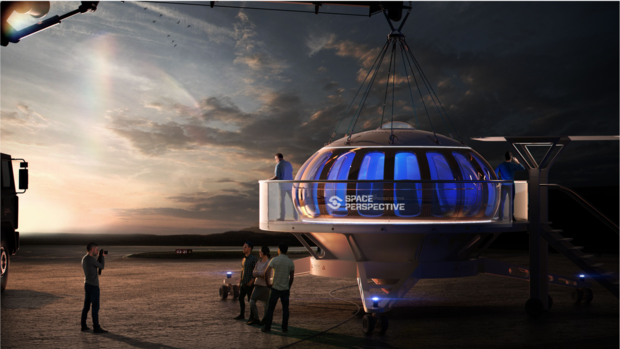
While civilians have flown as guests or paying passengers aboard U.S. and Russian spacecraft in the past, those trips were government-sponsored missions, piloted by professional astronauts. What Space Perspective and other spaceflight companies are offering is notably different, companies have said.
Measuring at 700 feet tall, Spaceship Neptune's capsule will feature plush seating, 360-degree panoramic windows, WiFi access and other amenities. Once inflated, the space balloon that lifts the capsule will be "the size of a football stadium," Space Perspective said.
There will be a captain on board and passengers won't require specialized training before liftoff. At its highest altitude, Spaceship Neptune will allow passengers to see the curvature of Earth against a backdrop of the sun, the company said.
Aerospace entrepreneurs Jane Poynter and Taber MacCallum founded Space Perspective in 2019 with the stated goal of helping more people see Earth from its upper atmosphere. The company said it completed a successful test flight of the space balloon in Titusville, Florida, earlier this month.
Poynter and MacCallum said during a press conference last year that they also planned to send research teams "to the edge of space" using Spaceship Neptune.
Poynter and MacCallum are one of many players in the emerging space tourism industry and, so far, their spaceflight package is the relative bargain of the bunch. Jeff Bezos' aerospace company Blue Origin, auctioned off one seat aboard its New Shepard spacecraft earlier this month for a galactic sum of $28 million . Bezos himself also plans to board the New Shepard on its first crewed flight .
"I want to go on this flight because it's the thing I've wanted to do all my life," Bezos said in an Instagram post earlier this month . "It's an adventure. It's a big deal for me."
Richard Branson's Virgin Galactic is expected to begin trips to space early next year. Tickets are more than $250,000 each and Branson's company has reportedly sold more than 600 seats. Virgin Galactic in March revealed the VSS Imagine, the first in a growing fleet of spacecrafts it plans to use for space tourism.
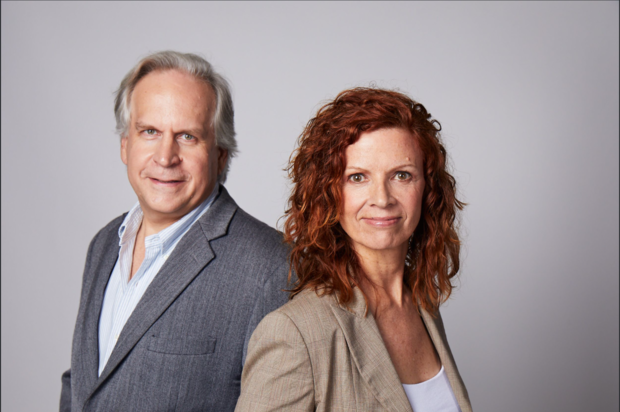
Meanwhile, Elon Musk's SpaceX has already sold tickets for a private, 10-day space ride to the International Space Station. That trip is slated to launch later this year. Tickets sold for $55 million each.
A 2019 UBS analysis projected space tourism will be valued at $3 billion by 2030. The larger space industry is expected to be worth $805 billion by that same year, UBS said.
Khristopher J. Brooks is a reporter for CBS MoneyWatch. He previously worked as a reporter for the Omaha World-Herald, Newsday and the Florida Times-Union. His reporting primarily focuses on the U.S. housing market, the business of sports and bankruptcy.
More from CBS News

U.S. probing whether major Tesla Autopilot recall went far enough

Astronauts confident Boeing's Starliner is finally ready for crew flights

Why you should split your funds between a CD and high-yield savings account now

Gold's price is high. Is it still safe to invest in?
Book Your Reservation
*For non-US Customers: We do not collect customer State/Province information in order to complete your deposit. You may continue to complete your deposit with the “State/Province” field disabled.
We will never sell your personal data. It will only be used to process your order and support your experience. For more information, please read our privacy policy .
clock This article was published more than 1 year ago
How to travel to space, Earth’s hottest new destination
Go boldly, but pack lightly.
The space just above our planet is booming . Off-world trips are rapidly increasing: 42 of the 51 commercial astronauts recognized by the Federal Aviation Administration left Earth within the past two years.
The FAA predicts their ranks will balloon in the next decade — which may also bring new destinations, such as a rotating space hotel whose construction, planners claim, will begin in 2026 — and some experts have expressed optimism that relatively affordable space travel could be possible by the middle of this century.
For now, though, costs remain enormous. A $450,000 ticket reserves a spot on Virgin Galactic’s space plane, which flies 50 miles above Earth — six times a passenger plane’s cruising altitude. Expect to pay even more to go higher. Blue Origin’s 11-minute journey by rocket, which reportedly cost more than $1 million, shoots above the 62-miles-high Kármán line, the generally agreed-upon boundary between Earth and space. Others spend days in space. In September 2021, four civilian Americans orbited for three days aboard a SpaceX Dragon capsule. No word on how much it cost them.
For $55 million , Axiom Space will send astronauts via a SpaceX rocket to the International Space Station, a laboratory that circles Earth once every 90 minutes. For two weeks last April, the ISS’s first Axiom crew members worked in the lab while forgoing proper showers.
The New Space Age
Space “ought to be on everybody’s bucket list,” said former NASA astronaut Michael López-Alegría , the Axiom Space vice president who commanded the April mission. “We’d be the first to admit that it’s not quite democratic yet, because it’s still pretty expensive, but we’ll get there.” The Houston-based company has already begun to build a segment of what will be a private space station.
Here’s how to pack and prep for Earth’s hottest new destination.
Getting ready
Training takes days to months. Axiom Space crew members spent at least 700 hours learning new tasks: how to run experiments, dock a transport vehicle to the ISS and respond to fires.
They also practiced on a centrifuge, the rapidly spinning machine that simulates the extreme acceleration of space travel. You don’t need to be in tiptop shape — floating in microgravity is effortless, López-Alegría said — but you will have to endure intense G-force as you exit and reenter the atmosphere.
You should be mentally prepared for a unique psychological experience called the overview effect , which occurs when people witness their home planet from above. “When we came back to Earth, I could not stop crying,” said aerospace PhD student Sara Sabry, founder of the Deep Space Initiative , who traveled to space last August via Blue Origin (whose founder, Jeff Bezos, owns The Washington Post).
Aboard SpaceX, you’ll wear spacesuits: sleek, pressurized white outfits with black-visored helmets. On Virgin Galactic and Blue Origin flights, the fit is closer to a jet pilot’s, with gear that’s not designed for loss of pressure. Sabry said her suit was comfy and custom-tailored. Under Armour makes the clothes — underwear, jumpsuit and zip-up boots — for Virgin Galactic, which founder Richard Branson wore in his July 2021 journey to space’s edge.
Going boldly, packing lightly
Space may be the one place you can fly without packing an ID or passport . “When we walk onto the vehicle, we’re wearing our spacesuits and pretty much nothing else,” López-Alegría said.
Expect to leave the rest of your worldly possessions on Earth, with a few exceptions. Sabry packed three pounds of mementos in a bag, including photographs and a single dirty sock belonging to her niece. On Inspiration4, the Earth-orbiting SpaceX mission, one astronaut brought his ukulele to serenade his teammates in the capsule.
Snapping selfies
Don’t plan on filling your Instagram feed with your space travels to make your friends jealous. You won’t have your phone.
On Sabry’s Blue Origin flight, a few people had a GoPro strapped to their wrists to capture video — especially of the three minutes of weightlessness.
The ISS provides cameras to use. Astronauts can browse the internet on the space station, but posting requires help. Pictures snapped in space are beamed to Earth, López-Alegría said, where someone on the ground uploads them to social media.
Eating and drinking
There wasn’t any snacking on the Blue Origin craft, Sabry said, and the up-and-down trips don’t leave time for in-flight meals. Hot food isn’t always an option with other carriers, either. The first course served on the orbiting Dragon capsule was cold pizza, though SpaceX founder Elon Musk apologized for the unheated pie and promised future astronauts would have a food warmer.
Why NASA and other space agencies want to return to the moon
That’s how the crew heats dinner on the ISS, which boasts a varied menu: about 200 options , mostly freeze-dried or thermostabilized. Tortillas replace bread to avoid crumbs; what’s just a tabletop mess on Earth becomes a hazard when bits can float into electronics or eyeballs. There’s no soda or beer because, according to NASA, carbonation bubbles would be unpleasantly routed through the digestive system without gravity to help an astronaut burp.
Staying clean-ish
Space is like backcountry camping. Both lack laundry machines and require some hygienic compromises. When astronauts must bathe, they squeeze packets of soap and water on their skin and apply rinseless shampoo to their hair. Toilets on the ISS and Dragon Capsule collect waste via suction hoses and fans. On the space station, urine is recycled into drinkable water . Toothbrushes and paste are the same, but without sinks, there’s no spitting.
Falling asleep
You’ll roll out sleeping bags in the SpaceX spacecraft or as an Axiom crew member on the ISS. Vehicles are temperature-regulated because the outside of the ISS can swing from minus-250 in the shadows to 250 degrees in the sun. Still, some modules, or sections, of the ISS can be chillier than others: López-Alegría said he donned long underwear to be cozier when drifting off in space.
Illustrations by Elizabeth von Oehsen. Editing by Amanda Finnegan.

Featured Topics
Featured series.
A series of random questions answered by Harvard experts.
Explore the Gazette
Read the latest.

Complex questions, innovative approaches

Early warning sign of extinction?

So much for summers of love
How to prepare for a trip to space.
Illustration by Oliver Burston/Ikon Images
Astronauts spend years training for missions. How do commercial travelers get ready?
Part of the wondering series.
The Medical School’s Aleksandra Stankovic is an aerospace psychologist and spaceflight biomedical researcher who studies how to optimize human performance and behavioral health in extreme operational environments. We asked her how a person gets ready to travel to space.
The spaceflight environment presents many challenges — technical, physical, and psychological. With more people having access to space travel today than ever before, successful and safe spaceflights require varying levels of preparation before launch day.
For government astronauts, candidates undergo a rigorous two-year initial training period before qualifying for flight assignment. This training includes learning about Space Station and flight vehicle systems, studying orbital mechanics, becoming proficient in emergency procedures (like how to handle scenarios such as fire, cabin depressurization, or medical issues), conducting flight training in T-38 jets (to build quick decision-making skills in high-performance aircraft), and developing Russian language skills (since international space missions involve collaboration among astronauts from various countries).
To prepare for the microgravity environment of space, astronauts also participate in simulations of weightlessness, including parabolic flights and training in the Neutral Buoyancy Lab, a large swimming pool where astronauts practice conducting spacewalks and learn to perform tasks in their pressurized spacesuits. Astronauts complete survival training and learn to cope with extreme conditions — a crucial skill in case of an emergency landing back on Earth in the water or in very cold locations like Siberia. They are trained to operate the robotic arm that is used for tasks such as capturing cargo spacecraft.
Once they receive a flight assignment, astronauts complete an additional 18 months of mission-specific training. They simulate various mission scenarios — including launch, rendezvous, and docking — and emergency procedures. Additionally, they undergo extensive training on the scientific experiments they’ll be conducting, like how to work with equipment, collect samples, and handle data.
Anyone who spends prolonged periods in space will need to spend a lot of their day working out to keep their bodies in strong shape to be healthy when they return home.
Since maintaining physical fitness is vital for astronauts to counteract the muscle and bone loss experienced in microgravity, they spend a lot of time preflight working out. At the same time, long-duration space missions can be mentally challenging, given the prolonged isolation, confinement, and separation from family and friends. Astronauts learn strategies to manage stress, maintain psychological well-being, and work effectively in close environments with their fellow crewmembers.
Commercial astronaut training is significantly less intensive than the training government-sponsored astronauts receive, since their missions are often of shorter duration and focus more on providing safe and enjoyable flying experiences. While commercial crews may stay in space for shorter intervals ranging from a few minutes for suborbital flight to several days or even weeks on the Space Station, government astronauts typically spend six months or more on the station. (Astronaut Frank Rubio recently set the record for longest American space mission with 371 consecutive days in space; cosmonaut Valeri Polyakov, who logged 437 continuous days in orbit on Russia’s Mir space station between 1994 and 1995, still holds the world record.)
Commercial astronauts often receive more generalized training that covers the basics of space travel and safety/emergency procedures. Anyone who spends prolonged periods in space will need to spend a lot of their day working out to keep their bodies in strong shape to be healthy when they return home. Everyday activities can be challenging without gravity, and sleeping can be difficult without the normal light cues from the sun that our bodies rely upon on Earth to regulate our circadian rhythms. A combination of technology and training help space travelers adapt.
As more people travel to space, on an expanding range of flight vehicles and for varying types of missions, spaceflight preparation too will undoubtedly continue to evolve. It’s an exciting time to be studying how to keep humans safe and healthy in space, and researchers like me are thrilled to be a part of enabling this next great wave of human space exploration!
— As told to Anna Lamb/Harvard Staff Writer
Share this article
Also in this series:.

How old is too old to run?
No such thing, specialist says — but when your body is trying to tell you something, listen
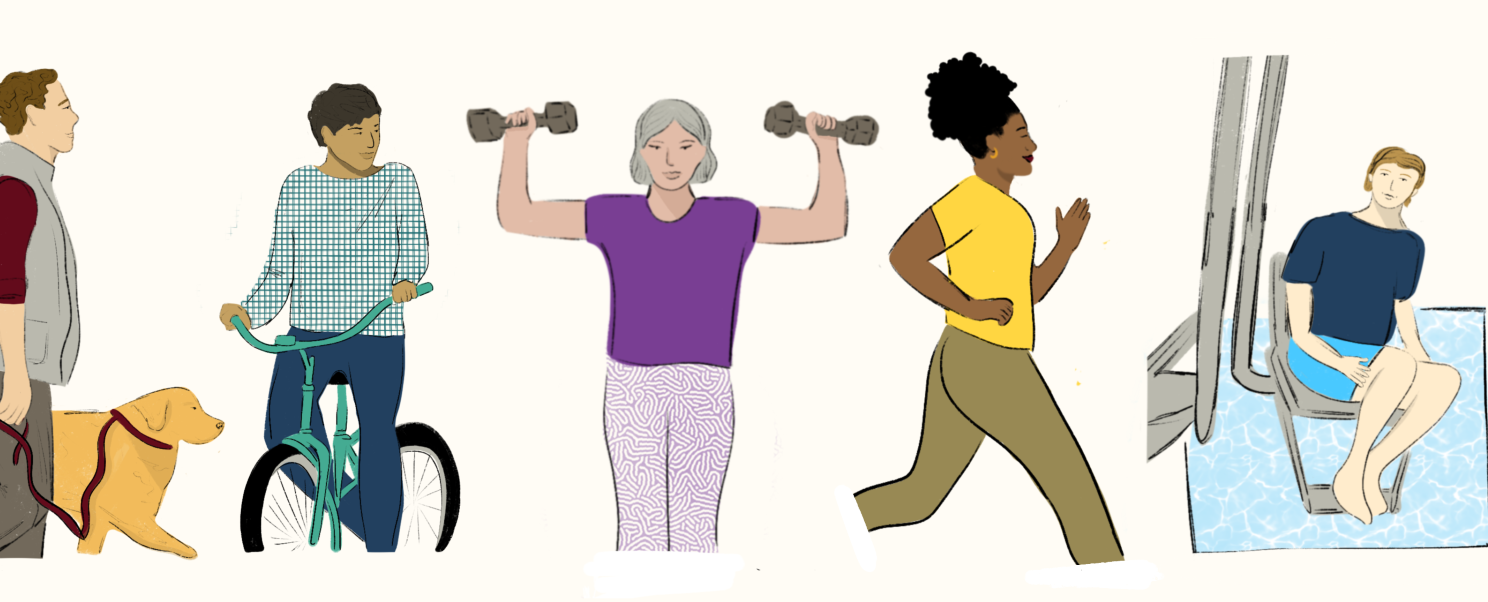
The 20-minute workout
Pressed for time? You still have plenty of options.

How to deliver very bad news
It’s hard to be a doctor. This is when it’s really hard.

Is organic better?
Not if you follow the evidence, researcher says

Next spat with your partner, try silence
If you’re doing all the talking, then you’re probably doing it wrong, says negotiation expert.

How to judge a painting
Do: Ask questions and keep an open mind. Don’t: Say your child could’ve made that.

Can you be close without sex?
Healthy intimate relationships vary but share one key feature, says psychologist

How to write funny
For Cora Frazier, it usually starts with deep sadness

Faster, fitter?
Not really, says Spaulding Rehab expert. When you go for a walk, focus on this instead.

Nothing that is not there and the nothing that is
You’ll never experience a black hole, but Avi Loeb can help you imagine one

Is cycling safe?
We shouldn’t take no for an answer, researcher says

The language of dreams
Proficiency, place, emotion, or something else? These late-night conversations defy easy explanation.
You might like
Seven projects awarded Star-Friedman Challenge grants

Fossil record stretching millions of years shows tiny ocean creatures on the move before Earth heats up

Despite ‘hippie’ reputation, male bonobos fight three times as often as chimps, study finds
When math is the dream
Dora Woodruff was drawn to beauty of numbers as child. Next up: Ph.D. at MIT.
Seem like Lyme disease risk is getting worse? It is.
The risk of Lyme disease has increased due to climate change and warmer temperature. A rheumatologist offers advice on how to best avoid ticks while going outdoors.
Three will receive 2024 Harvard Medal
In recognition of their extraordinary service

FLY TO THE ISS
Fly around the moon, train like an astronaut, feel complete weightlessness.





Space Adventures wants as many people as possible to experience what it is like to live in space, to circle the Earth, or travel beyond Earth orbit. In the next ten years, our clients will have a choice as to what vehicle to fly to space on …
Founded in 1998, Space Adventures, Inc. is the world’s premier private spaceflight company and the only company to have arranged for private astronauts to fly to and live in space. To date we have arranged …

Anousheh Ansari: A Woman Has Paid Her Own Way Into Space, Too

Space Tourism: Then and Now

Japanese billionaire gets ready for December space mission
Press releases, space adventures’ clients, yusaku maezawa and yozo hirano, return from the iss, space adventures’ clients, yusaku maezawa and yozo hirano, launch to iss, space adventures’ client to participate in trish research.
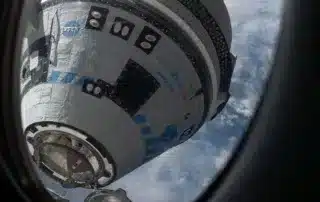
Private spaceflight in 2023
Private Spaceflight in 2023 The last couple years have seen huge progress in opportunities for private citizens to fly to space, with three new vehicles flying for the first time. Some have continued to [...]
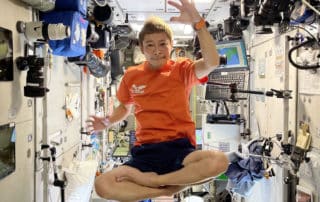
Private spaceflight in 2022
Private Spaceflight in 2022 2021 was an extraordinary year for private spaceflight with over 20 private individuals flying to space on four different spacecraft. In this blog, I will take a look back at [...]

Mixing Spaceflight and Philanthropy
Mixing Spaceflight And Philanthropy There is no escaping the fact that a flight to space (at least to low-Earth orbit), with prices in the tens of millions of dollars, is for the ultra-wealthy. [...]
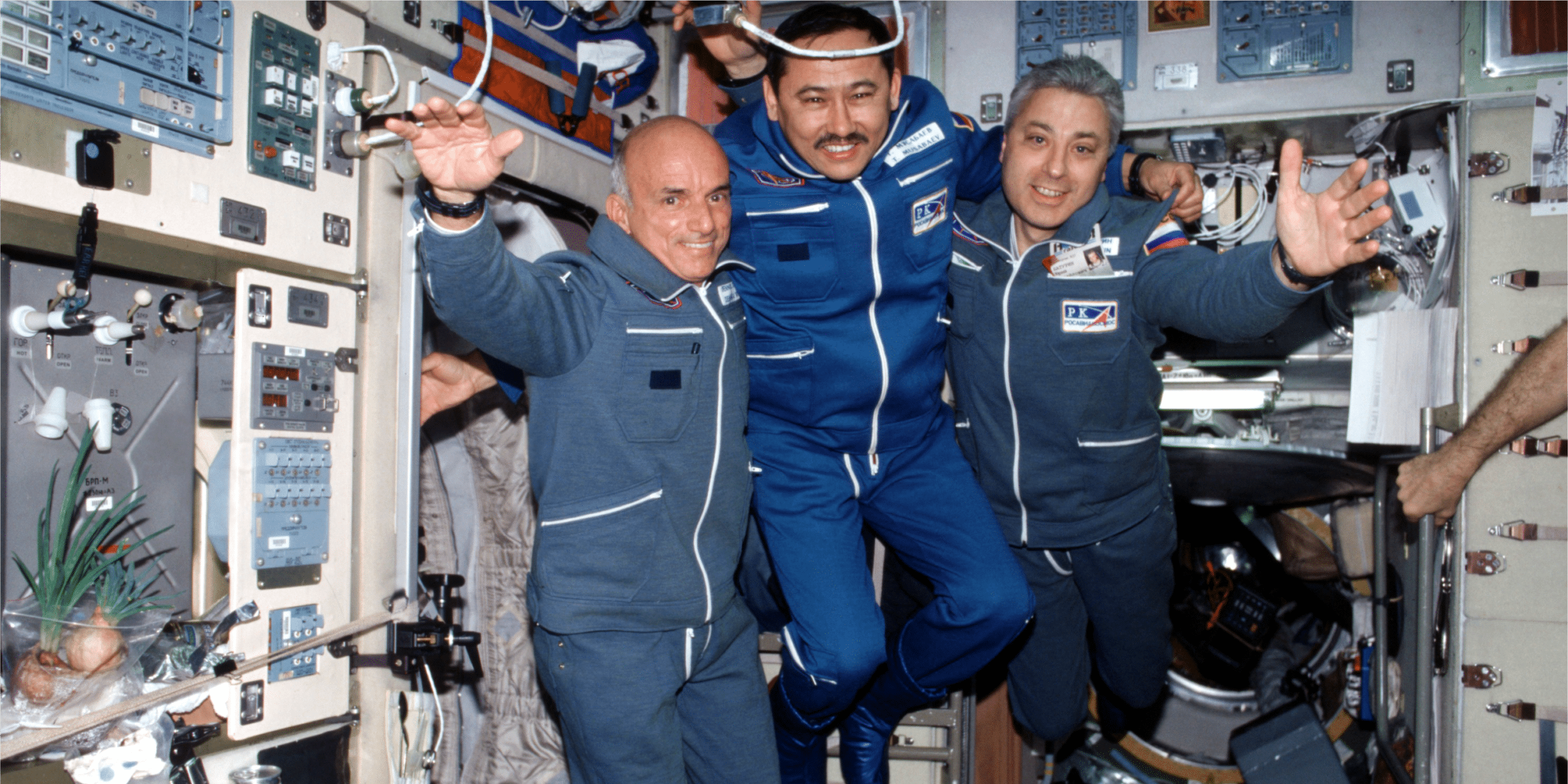
Blog: The 20th Anniversary of Private Spaceflight
A Look Back Let's start by saying that nothing worthwhile comes easy. We're celebrating the 20th anniversary of Dennis Tito's spaceflight. He made history by becoming the first fare-paying private citizen to launch to [...]
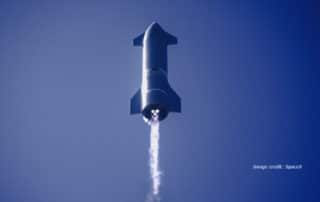
Blog: Commercial Spaceflight in 2021
Commercial Spaceflight in 2021 In early 2019 I wrote what is still one of the most popular blogs on Space Adventures' website - Commercial Spaceflight in 2019. I thought it would be interesting to [...]
Join Space Adventures newsletter for updates
Please leave this field empty.
Privacy Overview
HALO Space unveils capsule design for stratospheric space 'glamping'
A Spanish balloon company plans to begin flying paying space tourists in 2026
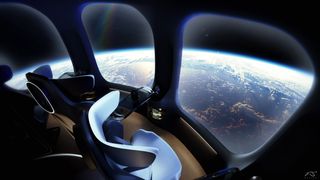
LONDON — Stratospheric balloon company HALO Space plans to offer aspiring space travelers the space tourism equivalent of glamping. Instead of tight space suits and stomach-churning G-forces typically attached to a rocket flight, the company's pressurized capsule, attached to a helium-filled balloon, will offer comfy swivel seats, giant windows and a selection of fine cuisine.
The Spanish-headquartered firm unveiled the design of the 3.9-ton (3.5 metric tonnes) Aurora capsule at an event in London on Wednesday, April 10, and said it hoped to begin commercial operations in 2026.
Unlike suborbital space tourism companies such as Virgin Galactic and Blue Origin , HALO Space won't be taking passengers high enough to experience weightlessness . The flight will be a rather leisurely affair lasting up to six hours, almost four of which will be spent hovering in the stratosphere some 22 miles (35 kilometers) above Earth's surface. There, high above the cloud tops, passengers will be able to admire the star-studded blackness of space above, as well as the curvature of the planet shrouded in the atmosphere beneath their feet.
Related: Space Perspective is nearly ready to fly tourists on luxury balloon rides near the edge of space (exclusive)
"When you talk to astronauts, they tell you that this experience of watching the planet from above is really something unique and extraordinary," HALO Space CEO Carlos Mira said in the press conference. "So far, only 650 humans have had the opportunity to experience this overview effect. But you don’t need to go all the way to space to have it. We hope to offer this experience to 1,000 people by 2030."
HALO Space is one of two companies currently readying its balloon technology to begin commercial operations in the next two years. The other is Florida-based Space Perspective, which revealed a completed test model of their Spaceship Neptune in February. HALO Space said they have conducted five test flights with a mockup and plan to take off for the first crewed test in 2025 before commencing flights with paying passengers a year later.
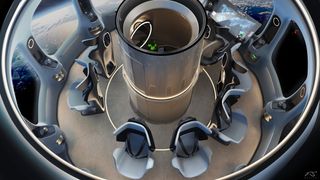
Both companies hope their propositions will attract a wider customer base than the jerky rocket rides of Blue Origin and Virgin Galactic, which propel daredevil clients on short joy rides to the edge of space and back. Reaching an altitude nearly three times higher than stratospheric balloons, Virgin Galactic and Blue Origin's spacecraft experience several-minute-long spells of microgravity before falling back to Earth .
Get the Space.com Newsletter
Breaking space news, the latest updates on rocket launches, skywatching events and more!
At $164,000 per seat, a trip with HALO Space will cost about a third of the price of a Virgin Galactic flight and won't require any advanced medical certifications.
"The take-off will be like being in an elevator," said Mira. "The ascent is soft and gentle, climbing at 12 miles per hour."
The 16-foot-wide (5 meters) and 11.5-foot-tall (3.5 m) capsule will be made of aluminum alloy and composite materials. With an internal space of 30.4 square feet (2.8 square meters), the spaceship could host eight paying passengers, plus a pilot. The internal atmosphere will be maintained by a life-support system similar to that of an aircraft. Yet despite this crammed interior and the extreme environment outside the capsule, passengers should still feel perfectly comfortable and able to relax.
"It's meant to be a sort of a glamping experience," Frank Stephenson, creative director and founder of Frank Stephenson Design who led the design work said at the conference. "It's a high-level experience for these people who are used to flying first class rather than economy."
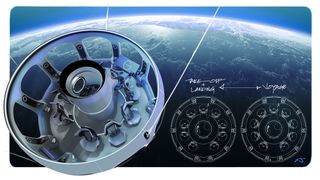
Stephenson, who had previously worked for high-end car makers including BMW, Ferrari, Maserati and McLaren, said the biggest challenge was keeping the capsule light enough so that it can be safely lifted by the balloon while still making sure every aspect of the interior lives up to the expectations of passengers.
“It's very easy to add weight to things and make it super comfortable," Stephenson said. "It's more difficult to reduce weight, reduce material and still make it feel like a very unique experience."
When fully inflated, the stratospheric balloon will be 460 feet (140 meters) tall, towering over the gleaming space capsule. The balloon is designed to detach from the capsule during descent. The capsule will then be brought down to a landing under a steerable parachute. Mira said the balloon technology is inherently safer than rockets loaded with explosive fuels. It also produces no greenhouse gas emissions, making the experience 100 percent compliant with the most stringent environmental protection standards.
— Space Perspective wants to take tourists on balloon rides to the stratosphere
— Space Perspective partners with Exclusive Resorts for balloon rides to the stratosphere
— Space Perspective starts selling seats for balloon rides
"We are using mature technologies," said Mira. "Balloons in general have been around for more than 200 years. This type of balloon, stratospheric balloons, have been around for almost 100 years. The first human went to the stratosphere on a balloon in 1931."
HALO Space plans to fly from spaceports in the Mojave Desert in the U.S., Spain, Australia and Saudi Arabia. The company is currently working with the U.S. Federal Aviation Administration to receive a license before its first crewed flight next year.
Join our Space Forums to keep talking space on the latest missions, night sky and more! And if you have a news tip, correction or comment, let us know at: [email protected].

Tereza is a London-based science and technology journalist, aspiring fiction writer and amateur gymnast. Originally from Prague, the Czech Republic, she spent the first seven years of her career working as a reporter, script-writer and presenter for various TV programmes of the Czech Public Service Television. She later took a career break to pursue further education and added a Master's in Science from the International Space University, France, to her Bachelor's in Journalism and Master's in Cultural Anthropology from Prague's Charles University. She worked as a reporter at the Engineering and Technology magazine, freelanced for a range of publications including Live Science, Space.com, Professional Engineering, Via Satellite and Space News and served as a maternity cover science editor at the European Space Agency.
Watch 2 gorgeous supernova remnants evolve over 20 years (timelapse video)
James Webb Space Telescope discovers some early universe galaxies grew up surprisingly fast
Watch SpaceX Dragon cargo capsule depart the ISS today
Most Popular
- 2 Russia vetoes UN resolution against nuclear weapons in space
- 3 Beavers are helping fight climate change, satellite data shows
- 4 Astronomers just discovered a comet that could be brighter than most stars when we see it next year. Or will it?
- 5 This Week In Space podcast: Episode 108 — Starliner: Better Late Than Never?
- Skip to main content
- Keyboard shortcuts for audio player
He missed a chance to be the first Black astronaut. Now, at 90, he's going into space
Scott Neuman

Ed Dwight poses for a portrait in February to promote the National Geographic documentary film The Space Race during the Winter Television Critics Association Press Tour in Pasadena, Calif. Chris Pizzello/Invision/AP hide caption
Ed Dwight poses for a portrait in February to promote the National Geographic documentary film The Space Race during the Winter Television Critics Association Press Tour in Pasadena, Calif.
Edward J. Dwight Jr. has waited a long time for his ride into space.
In the 1960s, he seemed poised to become America's first Black astronaut. That dream was never realized. Now, at age 90, he's about to finally get his shot, aboard a Blue Origin rocket.
The opportunity is "a curiosity more than anything else," Dwight says. "They called me up and asked me if I was interested. And of course I said yes."

The 1st Black Woman To Pilot A Spacecraft Says Seeing Earth Was The Best Part
While Dwight won't be the first African American in space — that honor went to Guion Bluford Jr. in 1983 — he will be the oldest person to go there, edging out (by a few months) Star Trek actor William Shatner , who flew aboard a Blue Origin rocket in 2021.
For many his age, a journey into space would seem unthinkable. Dwight says he's ready to go. He points out that the rigors of his upcoming flight won't be much different from what he experienced as a test pilot in the Air Force. "I've pulled more G's than any person on Earth," he says with a wry smile. "I've been high enough to see the curvature of the Earth. ... I've been doing things like that most of my life."
Space health expert Dorit Donoviel says the 11-minute flight of Blue Origin's New Shepard rocket means many of the concerns about the long-term effects of orbital and deep-space missions won't come into play.
"The main thing we worry about is the G forces," says Donoviel, director of the Translational Research Institute for Space Health at Baylor College of Medicine.

Air Force Capt. Edward J. Dwight Jr., the first African American selected as a potential astronaut, looks over a model of the Titan III-X-20 Dyna-Soar combination during a visit to Air Force headquarters in the capital in November 1963. Getty Images/Bettman Archive hide caption
Air Force Capt. Edward J. Dwight Jr., the first African American selected as a potential astronaut, looks over a model of the Titan III-X-20 Dyna-Soar combination during a visit to Air Force headquarters in the capital in November 1963.
Those G forces cause blood to drain from the head, and that's an issue for anyone launching into space, regardless of age. However, she points out that the seats aboard Blue Origin's rocket are angled at 20 or 30 degrees. "As you're experiencing the G-forces, you're getting it through the chest, which is not affecting your head," Donoviel says. "It's distributed through the chest, which really shouldn't matter very much."
And then there's the landing. The crew capsule will separate from the booster and come down under a set of parachutes — emitting a last-minute retro thrust to reduce speed to about 2 miles per hour to cushion the impact. "It's not even a controlled crash. It's a crash," Donoviel says. Still, she anticipates no issues.
No launch date set
Blue Origin has not announced a launch date yet. But Dwight and his crewmates will train for two days before liftoff at the company's Launch Site One in western Texas, not far from the Mexico border.
The company, owned by billionaire Jeff Bezos, declined to disclose the per-passenger cost of the flight, but says Dwight's seat is being sponsored by Space for Humanity and Blue Origin, with additional support from the Jaison and Jamie Robinson Family Foundation . (Jaison Robinson, who flew on a previous Blue Origin flight, is on the NPR Foundation Board of Trustees.)
Leland Melvin, a retired NASA astronaut who flew two space shuttle missions to the International Space Station, says it will be good to see Dwight finally "get his due" all these years after he first trained for space.

My Big Break
From touchdowns to takeoff: engineer-athlete soared to space.
Dwight sees his upcoming spaceflight as the "climax to an interesting story."
His own story, that is. One of the earliest chapters begins at an airfield in Kansas City, Kan. As a child, Dwight's fascination with aviation led to odd jobs cleaning aircraft owned by wealthy flyers. But even then, he had greater ambitions. "I told them I didn't want their nickels and dimes for cleaning airplanes anymore," he says. "I wanted to fly." At age 8, he got his first flight.
Dwight was equally interested in art and earned a scholarship to pursue his passion after high school. His father would have none of it. Art wasn't a real career, he insisted. Dwight should study engineering instead, so he enrolled at a junior college, receiving an associate's degree in 1953, the same year he enlisted in the Air Force.
After finishing primary flight training, he was commissioned as a second lieutenant. Dwight also got a bachelor's of science in aeronautical engineering from Arizona State University. Discrimination was an ever-present reality in the armed forces at the time, but as a skilled pilot, he made captain.
Kennedy wanted a Black astronaut
That's when President John F. Kennedy — eager to link his administration's push for civil rights to the country's early space exploration efforts — asked for a Black astronaut.
At the time, it was test pilots who became astronauts, and there were no Black test pilots. So, Dwight was invited to attend the Air Force's newly opened Aerospace Research Pilot School (ARPS).
But when he got the invitation letter, he almost threw it out, Dwight recalls. His Air Force peers "got a big laugh out of it," telling him that "all those guys have swagger, and it's a club," he said, referring to the all-white astronaut corps. They said, "They are not going to let you get in that club."
"And, of course, they were right," he says.

'Black In Space' Explores NASA's Small Steps And Giant Leaps Toward Equality
It was a huge career gamble. Dwight's father, who played baseball in the Negro Leagues, was strongly opposed. His mother, though, changed her son's mind. "She said, 'You are going to do this' because she was thinking it would be uplifting the race and racial pride," he says.
Upon entering the flight-test program, Dwight experienced immediate pushback that he says was rooted in racism. He says Chuck Yeager, the famed test pilot who ran the school, resented having to accept a Black candidate. (Yeager, who died in 2020, wrote in his memoir that his only issue was Dwight's piloting skills, which he described as "average.")
Once on the astronaut track, Dwight became a minor celebrity, especially in the Black community. He appeared on the cover of magazines such as Ebony and Jet . But he also endured taunts of "Kennedy's boy" because of the president's support.
Kennedy's 1963 assassination nearly derailed Dwight's training, he says. Days after the president's death, "Lo and behold, I had orders in my mailbox shipping me out of the country," he says.
Attorney General Robert F. Kennedy, the president's brother, intervened to keep him in the program, according to Dwight. He stayed in the Air Force for a few more years, but it became increasingly clear that he would not be selected as an astronaut. "When I found out it wasn't going to happen, that's when I left the program," he says. "I just packed my bags and left."

One of Ed Dwight's sculptures in Battle Creek, Mich., depicts escaped slaves along the Underground Railroad being led to freedom by Harriet Tubman and local abolitionist Erastus Hussey. Carlos Osorio/AP hide caption
One of Ed Dwight's sculptures in Battle Creek, Mich., depicts escaped slaves along the Underground Railroad being led to freedom by Harriet Tubman and local abolitionist Erastus Hussey.
After the Air Force, Dwight, who eventually settled in Denver, became a computer systems engineer for IBM, later opened a restaurant and worked as a real estate developer before being drawn back to his childhood love of art . Despite having little formal training, he was commissioned in 1974 to create a sculpture of Colorado's first Black lieutenant governor, George Brown.

Black History Month 2024
A child's dream to 'drive' a space shuttle propels him toward a historic nasa mission, from would-be astronaut to sculptor.
From there, his reputation as a sculptor blossomed. In 1977, he earned a master's of fine art in sculpture from the University of Denver. He specializes in sculpting historic African American figures. Among his more notable pieces are busts of jazz greats Dizzy Gillespie and one of Louis Armstrong on display at the National Museum of American History.
Melvin, who is African American, says when he met Dwight, he didn't know much about his backstory. "I got a copy of his book and I read some of the stuff that he had done," he says. "He reminded me of Katherine Johnson ," the NASA mathematician who led an all-woman group of "computers," who made vital orbital calculations for the agency's early crewed spaceflights. Their story was later featured in Hidden Figures, the book and 2016 film.
Dwight and Melvin became close friends. In recent months, they have worked together on The Space Race , a documentary released last year about the contributions and experiences of Black astronauts. Dwight's own story is prominent in the film.

NASA astronauts Victor Glover and Leland Melvin pose with Ed Dwight for a portrait to promote The Space Race in February at The Langham Huntington Hotel in Pasadena, Calif. Chris Pizzello/Invision/AP hide caption
NASA astronauts Victor Glover and Leland Melvin pose with Ed Dwight for a portrait to promote The Space Race in February at The Langham Huntington Hotel in Pasadena, Calif.
"He's not only funny, he's self-deprecating," Melvin says of Dwight. And one quality stands out. "He's got grit."
"But the other thing that his mother taught him was grace," he says. So, when being an astronaut didn't work all those years ago, "he gracefully pivoted to doing something else. It was just as impactful — just as impactful, especially in the Black community, which was his sculpture."
"He will now get his chance to do some zero-G floating and look at the planet from another vantage point," Melvin says.

Correction April 25, 2024
An earlier version of this story omitted Blue Origin as a sponsor of the flight that will take Edward J. Dwight Jr. into space.
- blue origin

Suggested Searches
- Climate Change
- Expedition 64
- Mars perseverance
- SpaceX Crew-2
International Space Station
- View All Topics A-Z
Humans in Space
Earth & climate, the solar system, the universe, aeronautics, learning resources, news & events.

NASA-Led Study Provides New Global Accounting of Earth’s Rivers

NASA’s Hubble Pauses Science Due to Gyro Issue

NASA’s Optical Comms Demo Transmits Data Over 140 Million Miles
- Search All NASA Missions
- A to Z List of Missions
- Upcoming Launches and Landings
- Spaceships and Rockets
- Communicating with Missions
- James Webb Space Telescope
- Hubble Space Telescope
- Why Go to Space
- Astronauts Home
- Commercial Space
- Destinations
- Living in Space
- Explore Earth Science
- Earth, Our Planet
- Earth Science in Action
- Earth Multimedia
- Earth Science Researchers
- Pluto & Dwarf Planets
- Asteroids, Comets & Meteors
- The Kuiper Belt
- The Oort Cloud
- Skywatching
- The Search for Life in the Universe
- Black Holes
- The Big Bang
- Dark Energy & Dark Matter
- Earth Science
- Planetary Science
- Astrophysics & Space Science
- The Sun & Heliophysics
- Biological & Physical Sciences
- Lunar Science
- Citizen Science
- Astromaterials
- Aeronautics Research
- Human Space Travel Research
- Science in the Air
- NASA Aircraft
- Flight Innovation
- Supersonic Flight
- Air Traffic Solutions
- Green Aviation Tech
- Drones & You
- Technology Transfer & Spinoffs
- Space Travel Technology
- Technology Living in Space
- Manufacturing and Materials
- Science Instruments
- For Kids and Students
- For Educators
- For Colleges and Universities
- For Professionals
- Science for Everyone
- Requests for Exhibits, Artifacts, or Speakers
- STEM Engagement at NASA
- NASA's Impacts
- Centers and Facilities
- Directorates
- Organizations
- People of NASA
- Internships
- Our History
- Doing Business with NASA
- Get Involved
- Aeronáutica
- Ciencias Terrestres
- Sistema Solar
- All NASA News
- Video Series on NASA+
- Newsletters
- Social Media
- Media Resources
- Upcoming Launches & Landings
- Virtual Events
- Sounds and Ringtones
- Interactives
- STEM Multimedia

Correction and Clarification of C.26 Rapid Mission Design Studies for Mars Sample Return

NASA’s Commercial Partners Deliver Cargo, Crew for Station Science

NASA Shares Lessons of Human Systems Integration with Industry

Work Underway on Large Cargo Landers for NASA’s Artemis Moon Missions

NASA’s ORCA, AirHARP Projects Paved Way for PACE to Reach Space

Amendment 11: Physical Oceanography not solicited in ROSES-2024

Why is Methane Seeping on Mars? NASA Scientists Have New Ideas

Mars Science Laboratory: Curiosity Rover

Hubble Spots a Magnificent Barred Galaxy

NASA’s Chandra Releases Doubleheader of Blockbuster Hits

Explore the Universe with the First E-Book from NASA’s Fermi

NASA Grant Brings Students at Underserved Institutions to the Stars

NASA Photographer Honored for Thrilling Inverted In-Flight Image

NASA’s Ingenuity Mars Helicopter Team Says Goodbye … for Now

NASA Langley Team to Study Weather During Eclipse Using Uncrewed Vehicles

NASA Data Helps Beavers Build Back Streams

NASA’s Near Space Network Enables PACE Climate Mission to ‘Phone Home’

Washington State High Schooler Wins 2024 NASA Student Art Contest

NASA STEM Artemis Moon Trees

Kiyun Kim: From Intern to Accessibility Advocate

Diez maneras en que los estudiantes pueden prepararse para ser astronautas

Astronauta de la NASA Marcos Berríos

Resultados científicos revolucionarios en la estación espacial de 2023
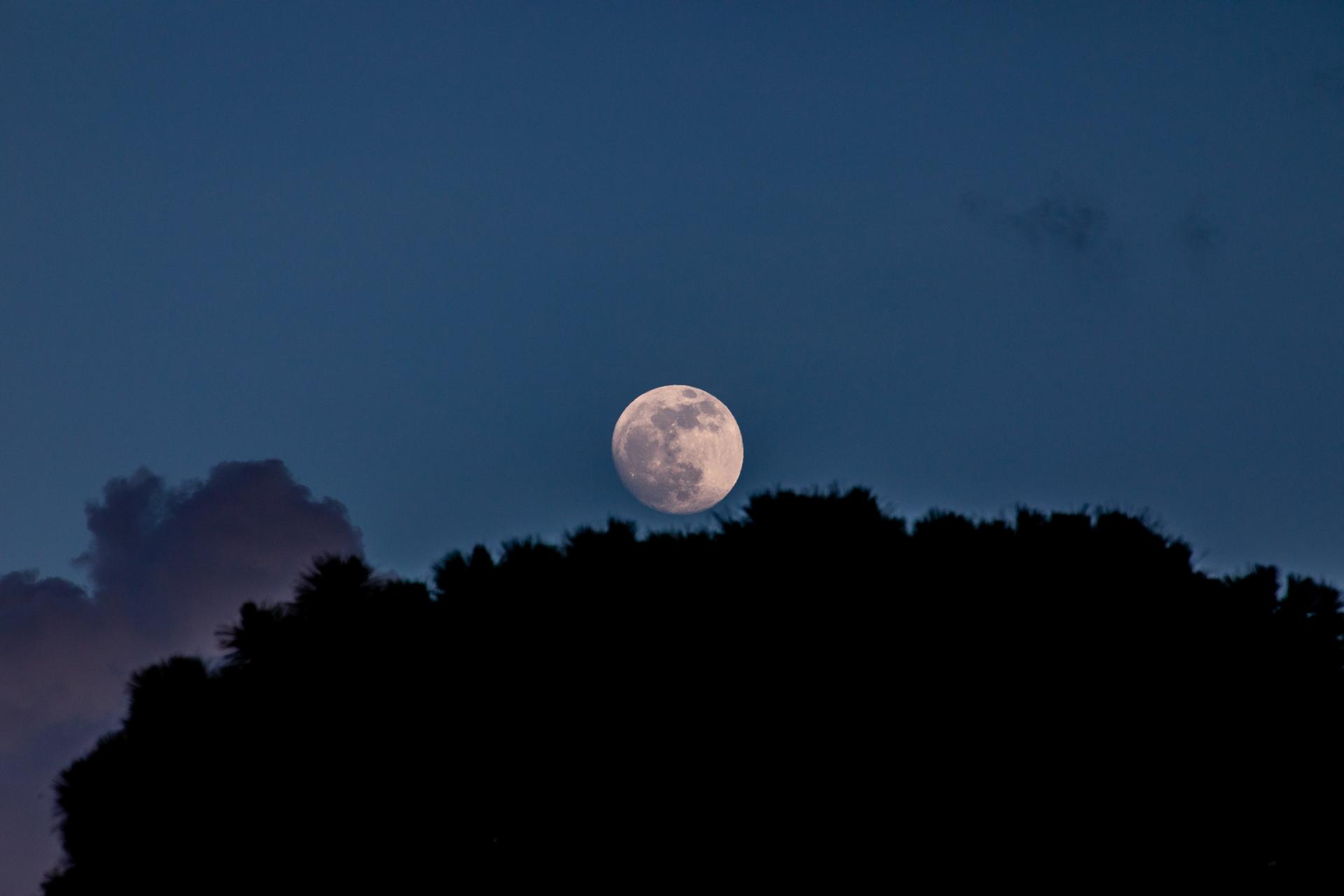
NASA at Home: Virtual Tours and Apps
NASA is exploring our solar system and beyond, uncovering worlds, stars, and cosmic mysteries near and far with our powerful fleet of space and ground-based missions.
Explore our facilities. View our laboratories. Enter our operations control centers.
We invite you to tour NASA virtually from the comfort of your home or convenience of your mobile device.
RS-25 Rocket Engine Testing : NASA’s Stennis Space Center in Mississippi conducted a series of RS-25 rocket engine hot fire tests for NASA’s Space Launch System, which is being built for missions beyond low-Earth orbit that will carry crew and cargo to the Moon and destinations beyond.
Commercial Crew Program 360-Degree Virtual Reality Tour : NASA’s Commercial Crew Program works with commercial partners to launch astronauts to the International Space Station from U.S. soil on American-built rockets and spacecraft . These immersive videos share the story of groundbreaking innovation borne of this government-industry partnership.
International Space Station Tour : The International Space Station is a unique scientific platform where astronauts conduct experiments across multiple disciplines of research – including Earth and space science, biology, human physiology, physical sciences, and technology demonstrations – that cannot be performed anywhere on Earth. In 2020, the station celebrated 20 years of a continuous human presence aboard the orbiting laboratory.
Operations Centers
Explore Goddard’s Clean Room : James Webb Space Telescope’s Communications Lead Laura Betz takes us behind the scenes inside the world’s largest clean room at NASA’s Goddard Space Flight Center in Greenbelt, Maryland. Explore where the Hubble Space Telescope was built and where its successor – the James Webb Space Telescope – was assembled . See the special gowning process engineers go through on a daily basis to enter this super clean environment. This tour gives you a 360-degree look from the unique filter wall to the storage of Webb’s 18 gold-plated mirrors. Check out Goddard’s Space Environment Simulator, a massive thermal vacuum chamber in which scientists and engineers cryotested the heart of the telescope, ISIM, by lowering the temperature of the structure to 42 Kelvin (-384.1 Fahrenheit or -231.1 Celsius) and below to ensure that it can withstand the frigid temperatures Webb will face 1 million miles out in space.
Robotic Operations Center (ROC) : This 360-degree view of Goddard’s Robotic Operations Center (ROC) shows off its unique hexapod robot, which helps engineers simulate the way a satellite moves in space. Drag the photo to explore the rest of the state-of-the-art facility. The ROC acts as an incubator for satellite servicing technologies that will allow for the repair, refueling, and upgrading of spacecraft. In this lab, robotic capabilities are tested in spacelike conditions before they are put to action in orbit.
Solar System
Planets of Other Stars
NASA’s Exoplanet Excursions : A guided journey through the amazing TRAPPIST-1 star system, known to be the home of seven Earth-size exoplanets orbiting a star that is only a little larger than Jupiter. This also includes tours of the Spitzer Space Telescope and the ability to control the telescope yourself.
Exoplanet Travel Bureau : Explore 360-degree visualizations of the surfaces of planets of other stars (and download free posters!). This works on desktops and mobile devices, and it is optimized for such viewers as Google Cardboard.
NASA Centers (with virtual tours)
NASA’s Ames Research Center Virtual Tour : NASA’s Ames Research Center in Silicon Valley, California, has led NASA in conducting world-class research and development in aeronautics, exploration technology, and science aligned with the center’s core capabilities.
NASA’s Armstrong Flight Research Center Virtual Tours : NASA’s Armstrong Flight Research Center in Edwards, California, is NASA’s primary center for high-risk, atmospheric flight research and test projects. For almost 75 years, research at Armstrong has led to major advancements and breakthroughs in the design and capabilities of many state-of-the-art civil and military aircraft.
NASA’s Glenn Research Center Virtual Tours : NASA’s Glenn Research Center in Cleveland designs and develops innovative technology to advance NASA’s missions in aeronautics and space exploration.
NASA’s Jet Propulsion Laboratory Virtual Tour : NASA’s Jet Propulsion Laboratory in Pasadena, California, is humanity’s leading center for exploring where humans cannot yet reach. Its spacecraft have flown to every planet and the Sun in a quest to understand our place in the universe, and to search for the possibility of life beyond Earth.
NASA’s Johnson Space Center Virtual Tour : NASA’s Johnson Space Center in Houston is home to mission control and astronaut training. It also leads International Space Station operations and expeditions, development of the Orion spacecraft, NASA’s Gateway outpost program, and numerous other advanced human exploration projects.
NASA’s Langley Research Center Virtual Tours : NASA’s Langley Research Center in Hampton, Virginia, works to make revolutionary improvements to aviation, expand understanding of Earth’s atmosphere and develop technology for space exploration. It was also where NASA mathematician Katherine Johnson worked.
Featured Apps
NASA selfie app : Put your photo in a virtual spacesuit in front of some of NASA’s most captivating space images. Access the NASA Selfie app for iOS or the NASA Selfie app for Google .
NASA app : This app offers news and multimedia from around the agency ; other applications focus on individual NASA projects or research areas.
Aircraft and Aeronautics
Aeronautics augmented reality app : Learn about NASA’s X-57 Maxwell, X-59 QueSST, and G-III Gulfstream aircraft through an app that brings them onto your mobile phone.
“Next Stop: The Stratosphere” : Explore SOFIA, NASA’s flying observatory, a Boeing 747SP aircraft modified to carry a 106-inch telescope. Scientists aboard SOFIA study stars, black holes, and more while flying between 38,000 and 45,000 feet.
Spacecraft augmented reality app : Learn about and interact with a variety of spacecraft that explore our solar system, study Earth, and observe the universe.
Browse more NASA apps and apps created by NASA’s Jet Propulsion Laboratory .
We encourage you to visit these sites for additional activities and resources:
NASA’s Artemis Program , NASA’s STEM Engagement , and NASA Kids’ Club
If you are interested in having a NASA speaker give a virtual presentation to your class or organization, visit the Speakers Bureau website and submit a request form.
Discover More Topics From NASA
NASA At Home
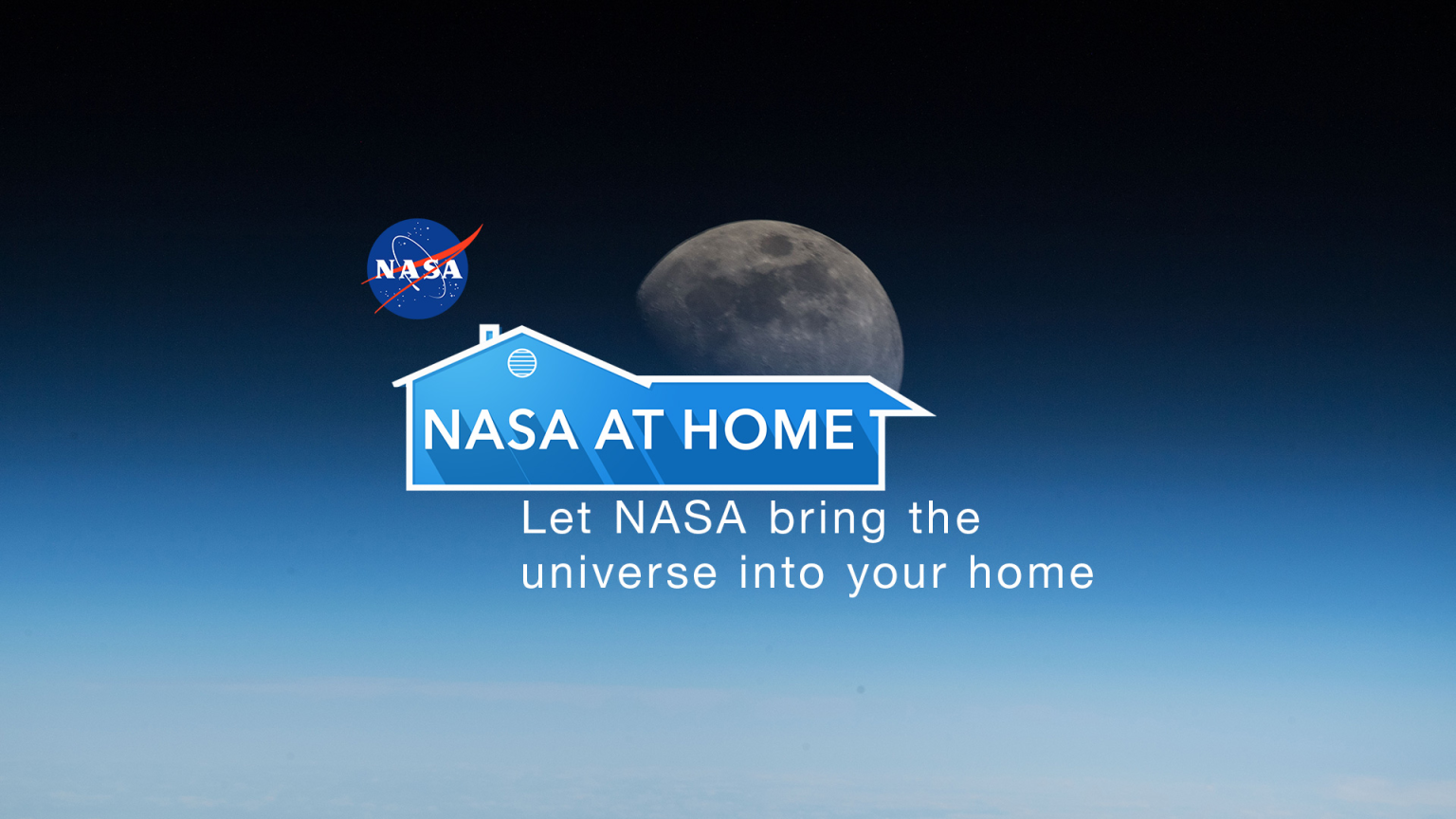
NASA at Home: For Kids and Families
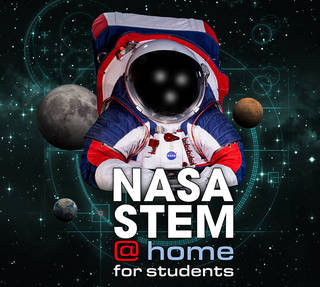
NASA at Home: Be a Scientist
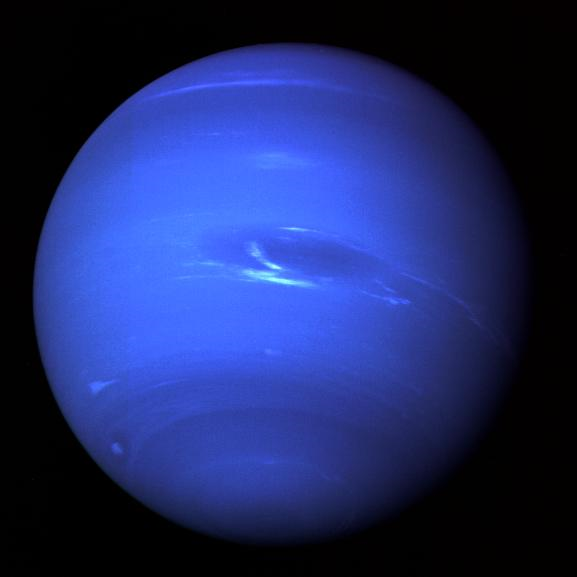
NASA at Home – E-books
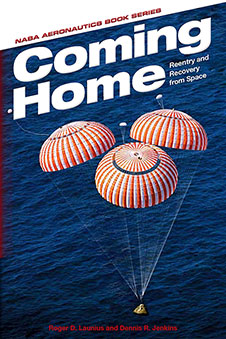

- Oil Futures
- Energy-General
- Heating Oil
- Natural Gas
- Company News
- Geopolitics
- Nuclear Power
- Solar Energy
- Hydroelectric
- Renewable Energy
- Geothermal Energy
- Tidal Energy
- Global Warming
- Breaking News
- Premium Articles
- Latest Discussions
- Energy General
- Oil Stocks & Prices
- Other Energy Topics
- OPEC Blends
- Canadian Blends
- U.S. Blends

- 2 days Drone Attacks Take Khor Mor Gas Field Offline, Claims Lives
- 2 days TotalEnergies Beats Q1 Profit Forecast Despite Lower Natural Gas Prices
- 2 days TotalEnergies Mulls Primary New York Listing to Expand U.S. Shareholder Base
- 2 days Activist Investor Elliott to Build Stake in Anglo American After Failed BHP Bid
- 2 days Outage At Norway’s Hammerfest LNG Extended Until Saturday
- 2 days Higher Oil Output Helps Chevron Beat Q1 Profit Estimates
- 2 days ExxonMobil Underwhelms With Q1 Earnings
- 2 days Refining Giant Phillips 66 Books Lower-Than-Expected Earnings
- 2 days Norway’s Oil Demand Hasn’t Crashed Despite Record EV Market Share
- 2 days A Strong Global Economy Is Expected to Keep Oil Prices Rangebound
- 2 days China’s EV Dominance Threatens to Undermine U.S. Subsidies
- 2 days Oil Prices Are Set for a Weekly Gain as Yellen Sees Inflation Falling
- 3 days Chevron Kazakhstan Oil JV Start New Tengiz Production
- 3 days Saudi Oil Giant, Aramco, Wins 4-Year FIFA World Cup Sponsorship
- 3 days Energy Groups of Czech Billionaire Book $7.8 Billion Core Earnings in 2023
- 3 days Hertz To Sell More EVs as Q1 Loss Exceeds Expectations
- 3 days Kazakhstan’s Oil Flows to Germany Threatened as Russia Demands Transit Fees
- 3 days Hess Q1 Earnings Trump Forecasts Ahead of Acquisition by Chevron
- 3 days Biden Administration Finalizes Strict Rules on Power Plant Emissions
- 3 days U.S. Refiner Valero Energy Beats Profit Forecasts in Q1
- 3 days European ESG Funds Witness Heavy Decline in Inflows
- 3 days Equinor Beats Q1 Earnings Expectations as Oil and Gas Output Jumps
- 3 days U.S. Solar Manufacturers Press Biden to Impose Tariffs on Asian Imports
- 3 days Refinery Fires Force Mexico to Reverse Its Plan to Cut Oil Exports
- 3 days Mining Giant BHP Makes Takeover Offer for Anglo American
- 4 days Gas Prices Likely to Keep Falling Ahead of Peak Driving Season
- 4 days OPEC Would Open Arms to Namibia, Encourages Investors to Consider
- 4 days China's Coal Prices Set to Soar, Industry Experts Predict
- 4 days SunPower To Cut Jobs After its Stock Gets Hammered
- 4 days U.S. Frackers Seek Ways to Reverse Well Productivity Declines
- 4 days U.S. Refiners Set to Report Strong Q1 Earnings
- 4 days Biden Administration Plans 12 Offshore Wind Auctions by 2028
- 4 days Oil Firms Doubtful Trans Mountain Pipeline Will Start Full Service by May 1st
- 4 days Baker Hughes Reports Forecast-Beating Earnings in Q1
- 4 days Tesla Promises Cheap EVs by 2025
- 5 days U.S. Crude Oil And Gasoline Inventories Drop Off
- 5 days Permian Basin Dominates US Energy M&A Activity in Q1
- 5 days China's Coal Dependence to Persist Despite Global Climate Goals
- 5 days Renewables Giant NextEra Books Higher-Than-Expected Q1 Earnings
- 5 days Wind Overtakes Fossil Fuels as the UK’s Largest Power Generation Source
- 3 minutes e-car sales collapse
- 6 minutes America Is Exceptional in Its Political Divide
- 11 minutes Perovskites, a ‘dirt cheap’ alternative to silicon, just got a lot more efficient
- 23 hours GREEN NEW DEAL = BLIZZARD OF LIES
- 1 hour How Far Have We Really Gotten With Alternative Energy
- 3 days Could Someone Give Me Insights on the Future of Renewable Energy?
- 2 days e-truck insanity
- 16 hours An interesting statistic about bitumens?
- 4 days "What’s In Store For Europe In 2023?" By the CIA (aka RFE/RL as a ruse to deceive readers)
- 7 days Bankruptcy in the Industry
- 4 days Oil Stocks, Market Direction, Bitcoin, Minerals, Gold, Silver - Technical Trading
- 7 days The United States produced more crude oil than any nation, at any time.
Breaking News:
Drone Attacks Take Khor Mor Gas Field Offline, Claims Lives
Four Big Mistakes in Deregulating the Electricity Industry
When policymakers both here and…

Breakthrough in Sodium Battery Chemistry Promises Lower Costs
A new mass synthesis process…

Energy Efficiency is Critical for a Sustainable Future
Governments must prioritize energy efficiency…
Felicity Bradstock
Felicity Bradstock is a freelance writer specialising in Energy and Finance. She has a Master’s in International Development from the University of Birmingham, UK.
Trending Discussions
Premium content, what does billionaires dominating space travel mean for the world.
- Billionaires like Jeff Bezos, Richard Branson, and Elon Musk are making significant investments in space travel.
- Private space companies are developing technologies that could revolutionize space exploration and satellite communications.
- Concerns are rising about the geopolitical implications of billionaires holding immense power in space.
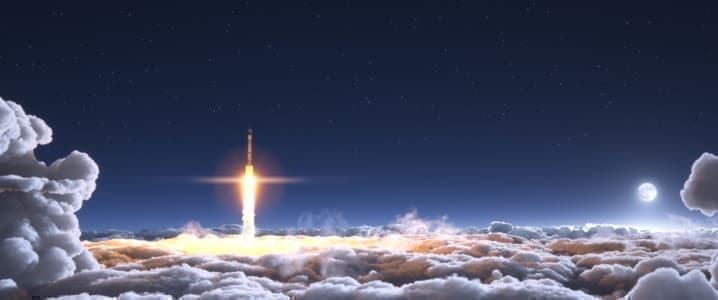
For decades, when people discussed space travel they thought of NASA. After all, the National Aeronautics and Space Administration accomplished the first moon landing in 1969 and has achieved many more feats since. However, over the last few years, several billionaires have been investing in space travel in a bid to offer passenger flights to space and enhance satellite technology. But where can these billionaires’ ventures take us and what does it mean for just a few players to be holding so much power?
Musk’s company SpaceX, founded in 2002, has launched over 4,500 Starlink satellites over the past five years, which contribute more than 50 percent of all active space satellites in orbit. These satellites are capable of delivering internet access around the world, enhancing global communications, and providing Musk with a great deal of power. SpaceX has over 1.5 million users around the globe. It has requested to be allowed to send a total of 42,000 satellites into space.
Meanwhile, Bezos sent up his first two satellites at the end of last year, after failing to launch two satellites the previous year. Despite setbacks, Bezos hopes to launch 3,236 satellites by 2029. While this would be an impressive feat, Blue Origin has been hugely overshadowed by SpaceX’s recent success.
There are growing concerns about what having so much power in one man’s hands may mean for geopolitical and other issues. In September 2022, Musk refused to activate SpaceX services to support a surprise drone attack on Russian ships by Ukraine. Musk said that he did this to avoid the potential retaliation by Russia. However, this has led to questions about what it means for a billionaire – not a country leader – to have so much power.
Moriba Jah, an associate professor of aerospace engineering and engineering mechanics at the University of Texas at Austin, explained , “Elon couldn’t just have 53% of all the satellites out there that are working if it weren’t because the US government allowed him to do that. So, I don’t blame Elon for this. I’m just saying the US government-backed him and is encouraging this sort of orbital occupation – and this is going to piss other countries off.” Jah added. “Occupation is not a good thing. Occupation is a sort of behaviour of colonizers, and just because something is legal doesn’t mean that it’s right.”
Ghaffarian is the co-founder of Intuitive Machines, which recently became the first company to land a commercial lander - its Odysseus spacecraft – on the moon. He is also the co-founder and chairman of Axiom Space, a company that sends private astronauts on commercial missions to the International Space Station (ISS). It is the first company to be given permission to connect with the ISS and is doing so to develop its own space station. Ghaffarian is also the executive chairman at Quantum Space and the founder of X-Energy .
Rather than competing on all fronts, Ghaffarian, Musk and Bezos plan to work together to achieve the first low earth orbit (LEO) to be able to go to the moon and Mars, and eventually beyond. Ghaffarian believes the space economy could soon be world trillions of dollars, spurred by technological advances, such as artificial intelligence and quantum computing.
ADVERTISEMENT
By Felicity Bradstock for Oilprice.com
More Top Reads From Oilprice.com:
- Big Oil’s Carbon Capture Conundrum
- A Strong Global Economy Is Expected to Keep Oil Prices Rangebound
- U.S. Crude Oil And Gasoline Inventories Drop Off
Download The Free Oilprice App Today

Back to homepage
Previous Post
Related posts

U.S. Drilling Activity Slips

Exxon Expects Regulator To Greenlight $60-Billion Pioneer Deal in June

Washington's Pleas Fall on Deaf Ears as Ukraine Strikes Russian Refineries
Leave a comment, most popular.

Israel Claims to Have Dealt a Serious Blow to Hezbollah

Russia's LNG Expansion Plans Hit the Wall

Namibia Racks Up Another Major Offshore Oil Discovery

Why Shell Has Soured on The London Stock Exchange

Nuclear Tensions Rise as Poland Offers Territory for NATO Warheads
- More About Us
- Advertise with us
- Editorial Staff
- Terms & Conditions
- Privacy Policy
© OilPrice.com Google+ -->
The materials provided on this Web site are for informational and educational purposes only and are not intended to provide tax, legal, or investment advice.
Nothing contained on the Web site shall be considered a recommendation, solicitation, or offer to buy or sell a security to any person in any jurisdiction.
Merchant of Record: A Media Solutions trading as Oilprice.com
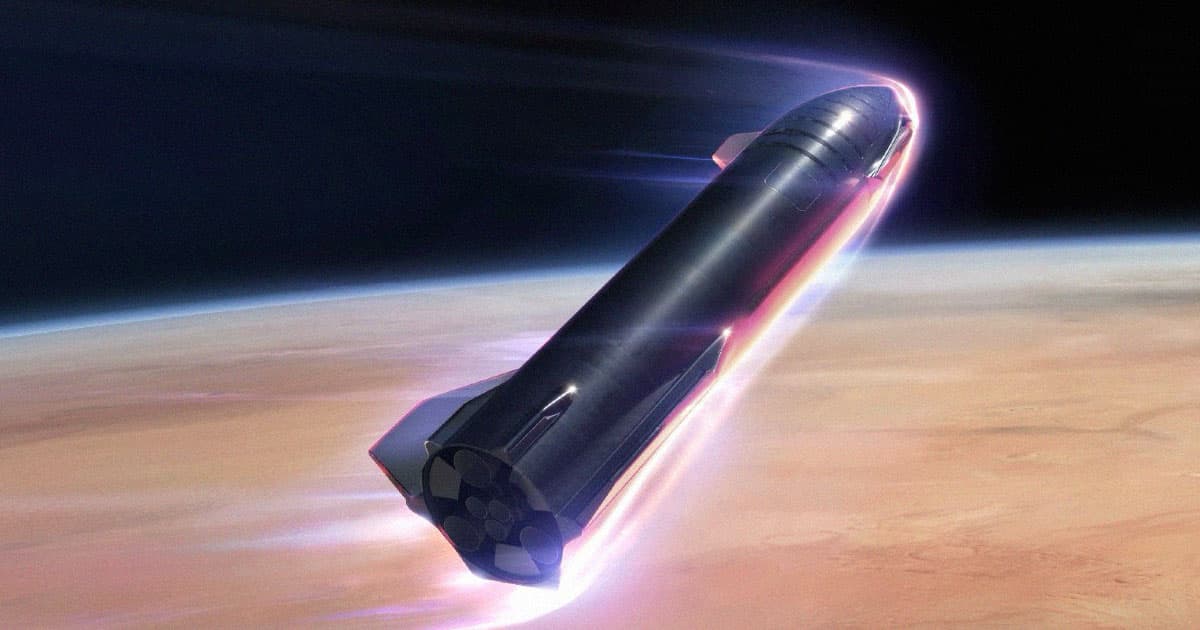
Experts Suggest Using SpaceX's Starship to Rescue Stranded Samples on Surface of Mars
"you could probably just roll perseverance into starship and fly back to earth.", knight in stainless armor.
NASA's highly ambitious Mars Sample Return (MSR) mission is on thin ice.
An independent review board balked last year at the Mars Sample Return mission's "unrealistic" budget, highly complex mission design, and glaring management failures.
Earlier this year, budget cuts forced the agency's Jet Propulsion Lab to let go of a whopping 530 employees , with NASA leaders racing to keep the MSR mission from imploding completely.
The space agency announced this week that it would solicit proposals from the private space industry for "innovative designs" to return Martian samples collected and bagged by its Perseverance rover over the last couple of years.
And, as Scientific American reports , SpaceX's mammoth Starship spacecraft may just fit the bill.
"Starship has the potential to return serious tonnage from Mars within [around] five years," SpaceX CEO Elon Musk suggested in a tweet earlier this week, responding to the announcement.
Interplanetary Road Trip
Planetary Society senior space policy adviser Casey Dreier told SA that SpaceX's super-heavy Starship launch system could be the perfect vehicle for the job, pointing out that NASA is already planning to use the rocket to get astronauts to the lunar surface for its Artemis program.
"It’s encouraging companies to use infrastructure built for Artemis," he told SA . "The only conclusion you can really draw from that is they’re hoping Starship somehow is the solution here."
"You could probably just roll Perseverance into Starship and fly back to Earth," Dreier added.
Former NASA chief scientist Jim Green, who helped establish MSR at the agency, agreed that it could make sense to "leverage assets that we didn't have" when the plan was first devised.
There are an astonishing number of moving parts when it comes to NASA's current plan to return samples from the surface of Mars, an interplanetary Rube Goldberg machine that's already required an astronomical amount of funding and years of planning.
Needless to say, a rocket that could both land and lift off from the Martian surface could help streamline the endeavor significantly.
While nobody really knows if Starship could ever be used to collect samples from the Red Planet — SpaceX has yet to even get it into space and back in one piece — it's a glimmer of hope for an expensive mission with a spectacular potential scientific payoff.
"There are aspects of solar system evolution that can only be done through the return of samples [from Mars],” Brown University planetary scientist Jack Mustard told SA . "Having datable samples from another planetary body to address that question would be unbelievable."
More on Starship: People Are Selling Chunks of SpaceX's Exploded Starship on eBay
Share This Article
Protect Your Trip »
The 18 best places to see the northern lights.
Check the aurora borealis off your bucket list.
The Best Places for the Northern Lights

Getty Images
The northern lights, known as the aurora borealis, are a spectacular natural light show visible at certain times of the year in the Northern Hemisphere. They occur when electrically charged particles from the sun collide with gases in the Earth's atmosphere, creating vibrant streaks of blue, green, pink and violet dancing across the night sky. 2024 and 2025 are an excellent time to catch the northern lights: Solar activity will be at a peak, making for a more impressive experience, if you're in the right place.
The best places to see the aurora borealis have little light pollution, clear skies and no precipitation. The lights are only visible at northern latitudes when it's dark outside, so the months from September to April are best for seeing the aurora. There's also a Southern Hemisphere counterpart, the aurora australis; there are fewer easy spots from which to view this phenomenon, but if you're lucky, it can be equally brilliant.
For more information on the northern lights, scroll down to the FAQ section at the bottom of this page. Read on to discover the top destinations where you can see the kaleidoscopic northern and southern lights.
Fairbanks, Alaska

Fairbanks is by far one of the best places in the world to view the northern lights, as it's located directly under the auroral oval. This ring-shaped zone sits around the Earth's geomagnetic North Pole and is generally associated with the most vibrant aurora sightings. Visitors can expect to see the lights on an average of four out of five clear nights during aurora season, which lasts from late August to late April.
You can book a northern lights tour to see the aurora from the springs and tubs at Chena Hot Springs Resort. This excursion includes round-trip transportation to the resort from town, a soak in the hot springs, a visit to the Fairbanks Aurora Ice Museum and an aurora viewing tour; dinner and drinks centered around Alaska produce are an option extra with hot drinks supplied.
There's more to Fairbanks than just the northern lights: If you visit in late summer, consider family-friendly activities like a ride on the Riverboat Discovery or gold panning. For a festive holiday experience in the winter, head around 15 miles out of Fairbanks to visit the Santa Claus House in the city of North Pole. Travelers can also see ice sculptures in February and March at the impressive World Ice Art Championships or take a dog-sledding or snowmobiling tour .
Where to stay: For excellent chances of aurora viewing, book a private igloo at Borealis Basecamp, a top glamping resort located on 100 remote acres of boreal forest about 25 miles from Fairbanks. With activities like dog-sledding on top of aurora viewing, past visitors regularly describe it as a once-in-a-lifetime experience.
Tromsø, Norway

Located about 220 miles above the Arctic Circle, Tromsø is one of several top spots to view the northern lights in Norway. At the darkest point of the aurora season – which runs from September to early April – the sun doesn't rise in this northern part of the country, although there is twilight during the day. With this level of darkness, there are more opportunities to see the aurora.
Tromsø itself is a small but lively city, so there's plenty to see and do when you're not looking up at the sky, including a visit to the beautiful Arctic Cathedral. In late January to early February, the city hosts the Northern Lights Festival, a 10-day music and performing arts event featuring a variety of musical genres.
Aurora chasers can view the lights on their own while in town, but to get a better view, it's recommended to head away from the city lights. Arctic Circle Tours is one company offering guided trips, with small groups for a more personal vibe. Alternatively, adventure-seekers can embark on an exhilarating husky trekking expedition in the Arctic wilderness.
Where to stay: For accommodations with harbor views, look no further than the Scandic Ishavshotel – guests love it for its convenient central location in the city, as well as its plus-sized breakfast buffet with plenty of choices.
Luosto and Rovaniemi (Lapland), Finland

Lapland is located within the Arctic Circle in the northernmost part of Finland. The northern lights are most visible here between the end of August and April – and approximately 200 times a year – so there are many opportunities for aurora spotting. Finnish Lapland is also known as home to the Sámi people (the only recognized Indigenous group in the European Union region), some 200,000 reindeer and Santa Claus – who can be visited in the town of Rovaniemi, the region's largest city and a great base for your aurora expedition.
Consider venturing roughly 70 miles north of Rovaniemi to the resort town of Luosto, set among the picturesque and hilly landscape of Pyhä-Luosto National Park. Here, you can also spend a magical evening outdoors under star-filled skies during a reindeer-drawn sleigh ride through the snow-covered forests. Jaakkola Reindeer Farm offers a reindeer sleigh tour to spot the aurora once weekly; it includes a stop to warm up at a bonfire camp with snacks, hot beverages and local fireside stories.
Where to stay: For a bucket list experience, watch the impressive light show from a glass igloo at Santa's Hotel Aurora & Igloos in Luosto. Past visitors love the cozy atmosphere here, boosted by amenities like saunas and log fireplaces. If you're sticking to Rovaniemi, the Arctic TreeHouse Hotel is a stunning choice, with designer cabins perched among the snow-covered taiga forest.
Orkney, Scotland

This group of captivating (and mostly uninhabited) islands, located about 10 miles off Scotland's remote northern coast, is one of the best places to see the northern nights in the U.K. Fall and winter are the best seasons to witness the aurora, also known in local Shetland dialect as the "Mirrie Dancers," with fall bringing the highest proportion of clear nights. A few places to see the spectacular light show include along the coast at Birsay or the Broch of Gurness, an archaeological ruin on a sweeping and dramatic coastline.
In addition to the aurora, Orkney is home to breathtaking coastal landscapes and more sheep than you can count (try some local lamb, if you can). Travelers can also visit the Heart of Neolithic Orkney, a UNESCO World Heritage Site with several monuments dating back 5,000 years.
Where to stay: During your visit, plan to stay in the historic town of Kirkwall, the capital of the Orkney Islands: The no-fuss Ayre Hotel offers harbor views, and past visitors compliment the hearty meals in the hotel restaurant. Spot the aurora close to town at Inganess Bay and Wideford Hill.
Yellowknife, Canada

Yellowknife, the capital of Canada 's Northwest Territories, dubs itself the "Aurora Capital of the World." Thanks to its position in the middle of the auroral oval, the city puts on one of the world's most awe-inspiring light shows. The period from mid-November to the beginning of April is the recommended time to spot the aurora, but it's also possible to see the aurora during more hospitable weather from late summer to early fall as the lights are visible up to 240 days a year.
Located on the northern shore of Great Slave Lake, Yellowknife boasts winter sports such as ice fishing and cross-country skiing. If you visit in March, plan to attend the monthlong Snowkings' Winter Festival, which features events and activities like a snow-carving competition, a snow castle, live music and more.
For a unique experience, book a tour through Aurora Village to view the lights. The property will pick you up from your hotel and take you to its site, where you can stay warm in a tent while sipping hot beverages. The Aboriginal-owned Aurora Village also offers activities such as dog-sledding or snowshoeing excursions.
Where to stay: Warm up in the fireside lounge at The Explorer Hotel in Yellowknife. Previous visitors note the warm and helpful staff as a strength here.
Jukkasjärvi, Sweden

The optimal time for seeing the illuminated skies in the northern part of Sweden, known as Swedish Lapland, is between early September and late March. The small Swedish village of Jukkasjärvi sits around 125 miles above the Arctic Circle on the Torne River and is an ideal locale for aurora viewing. You'll fly to the nearby Kiruna Airport to get here. With the village's origins dating back to the 17th century, you can still find some of the original homesteads, including an old timber cottage. Today the village boasts 800 residents – and more than 1,000 dogs.
Where to stay: If you're up for a chilly overnight adventure, reserve accommodations at the world's first permanent ice hotel, the aptly named Icehotel 365. Each of its artist-designed suites is sculpted from ice with a unique theme and maintains temperatures around minus 5 degrees Celsius (about 23 degrees Fahrenheit). The rooms also feature beds with reindeer hides and thermal sleeping bags so you can bundle up during the night. While you're at the property, take advantage of the guided "Northern Lights Safari on Snowmobile" or embark on the "Moose Safari on Horseback" atop an Icelandic horse.
Reykjavik, Iceland

October through March is the best time to chase the aurora borealis in Iceland . There are numerous natural parks and attractions throughout the country where you can view the show during the long and dark winter, but the capital city of Reykjavik also offers many options for accommodations, restaurants, tours and other activities for your visit. For optimum aurora viewing in the city away from the light pollution, head to Öskjuhlið. This wooded and hilly area in Reykjavik sits at 200 feet above sea level and has walkways and paths where you can see the nighttime show.
Atop this hill sits Perlan, which houses the only planetarium in the country and a museum featuring exhibits about Iceland. Perlan is also home to the world's first indoor ice cave and glacier exploratorium. During your visit, don't miss the panoramic views of the city from the building's fourth-floor observation deck. From this vantage point, you'll be able to see the Snæfellsjökull glacier; Keilir, a volcanic mountain; and Esja, the mountain of Reykjavik.
Where to stay: While in Reykjavik, splurge on an overnight tour with Buubble Tours. This experience includes breathtaking sightseeing spots and a night spent under the magical northern skies in a transparent bubble at the 5 Million Star Hotel. For longer stays, consider the eco-friendly Eyja Guldsmeden Hotel, with sweeping views of the city – guests love it for its cozy yet chic Scandinavian design.
Southern Iceland

While Reykjavik is a great aurora-viewing spot if you like having amenities close by, consider getting out into Iceland's stunning, otherworldly countryside for a unique backdrop for the northern lights. One unique place to see them is the black sand beach at Reynisfjara (but watch out for the dangerous waves here). Alternatively, head to Jökulsárlón, a glacial lagoon and seal habitat, where the aurora's reflections in the icy water are truly beautiful.
There's no shortage of tours that will stop by these locations and more for possible aurora sightings. Consider a 10- or 13-day tour around the country with Fun Travel, or a four-day option from Arctic Adventures. If you want to do things at your own place, it's also possible to self-drive – just know that road conditions can be icy, particularly in the depths of winter (although Icelandic roads are generally well-maintained).
Where to stay: Hotel Rangá is a formidable option for aurora-spotting. It offers a variety of special amenities, such as aurora wake-up calls, a lookout deck and snowsuits to keep you warm if you're outside viewing the lights. Past visitors praise Rangá for being a comfortable yet luxurious place to relax, be it in the outdoor hot tubs or the cozy and sociable bar.
Kangerlussuaq, Greenland

Greenland may not be the most accessible place to travel for viewing the northern lights, with limited flight options (mostly via Iceland), but those who make it here will be thrilled they did. The tundra of Kalaallit Nunaat – the Greenlandic name for the country – is one of the best places on the globe to see the aurora from September to early April.
For the more adventurous aurora seekers, head to the top of the Greenland Ice Cap for spectacular views of the lights. This impressive glacier covers 80% of the country and is accessible via the tiny town of Kangerlussuaq. Located on a fjord right along the Arctic Circle, the town, often described as a gateway to Greenland, was a former U.S. Air Force base and is now home to Greenland's main airport. The town is known for having clear skies on some 300 nights per year, so chances of a sighting are particularly good here.
Tour company Guide to Greenland offers various tours, from two-hour aurora-viewing trips to a tough but rewarding multi-night dog-sledding expedition across the ice. For a less strenuous experience, companies like Nordic Saga Tours offer cruises through the Arctic landscapes around Kangerlussuaq.
Viking cruise along Norway's coast

Courtesy of Viking
Embrace the winter and set sail for the Arctic Circle to experience the aurora in northern Norway. The 13-day "In Search of the Northern Lights" cruise itinerary with Viking departs from London for the North Sea with stops in ports of call that are top aurora-viewing locales, including Tromsø, Alta and Narvik, plus a stop in Amsterdam en route. The cruise ends in Bergen, Norway.
While on land, take in the natural beauty of the snow-blanketed landscapes and book bucket list excursions like a night spent in an igloo or a reindeer sledding adventure. You can also chase the lights into the wilderness by snowmobile, take a dog sled ride under the stars or view them from a Sámi tent atop the mountain Pæska in Alta. This Viking Ocean Cruises itinerary is offered with departure dates from mid-January to mid-March.
Headlands International Dark Sky Park, Michigan

Regarded as one of the top spots in the U.S. to see the aurora outside Alaska, Headlands International Dark Sky Park sits at the top of Michigan 's lower peninsula, less than 5 miles from Mackinaw City. While the northern lights are less common here due to the relatively southern location, the best time to catch a glimpse of this phenomenon is typically during the spring and fall – and appearances can usually be predicted a couple of days in advance. The park even maintains an online Clear Sky Chart so you can check the weather forecast before you go.
There are also other stargazing opportunities throughout the year at Headlands. During the summer months the Milky Way is visible across the sky, and late summer evenings entertain visitors with meteor showers.
Where to stay: If you're visiting between late April and the end of October, splurge on a stay at Mission Point Resort on Mackinac Island, where the aurora should also be visible. Guests describe this iconic property situated along the shoreline of Lake Huron as positively charming, thanks to its historic nature and manicured grounds. The resort also offers a host of outdoor activities from bike rentals to swimming.
Tips on Trips and Expert Picks Newsletter
Travel tips, vacation ideas and more to make your next vacation stellar.
Sign up to receive the latest updates from U.S News & World Report and our trusted partners and sponsors. By clicking submit, you are agreeing to our Terms and Conditions & Privacy Policy .
Voyageurs National Park, Minnesota

Martha Shuff | Courtesy of Voyageurs National Park
Located on the international border between Minnesota and Ontario, Voyageurs National Park is an approximately 218,000-acre labyrinth of boreal forests, lakes and streams. Voyageurs is Minnesota's only national park; it's also unique in that the park's interior is accessible only by boat, unless you visit by snowmobile in winter. As a certified International Dark Sky Park , Voyageurs provides opportunities to view the Milky Way on clear evenings, especially in the summer. Year-round aurora viewing is also possible on evenings with clear dark skies, but chances are better during the winter, when it's dark for longer.
For a guided stargazing tour – including the Milky Way, the constellations and (if you're lucky) the northern lights – book with Voyageurs Outfitters. If you're on your own, park officials note that almost any campsite is a good spot for northern lights viewing and stargazing. You can also check out the boat launch areas around Ash River, Kabetogama Lake and the Rainy Lake Visitor Center for top-notch views.
Where to stay: Those who prefer to sleep in a warm, cozy bed instead of camping under the stars can make reservations at the Cantilever Distillery + Hotel, a boutique Trademark Collection by Wyndham property in the nearby town of Ranier, Minnesota. Visitors report that there's a lot to like here, from the industrial-chic rooms to friendly staff to top-notch cocktails in the active distillery on the premises.
Abisko National Park, Sweden

Given its Arctic location, Sweden is one of the prime spots for aurora viewing in the Northern Hemisphere, with Swedish Lapland at the top of the list. The fall and winter months (from September to March) offer the best opportunities to witness the spectacle, as there is more darkness than light during the days.
If you're up for the Arctic adventure, December is an ideal month to visit Abisko National Park, which some regard as one of the best places on Earth to see the lights dance across the sky. The park's mountainous terrain and clear dark skies offer dramatic front-row seats for viewing the northern lights. The Aurora Sky Station is one of the best vantage points to see the aurora in the park. Join one of the expert presentations to learn about the science behind this fascinating phenomenon.
If you'd prefer to chase the lights with a curated tour, professional photographers and aurora-chasing guides at Visit Abisko lead three- to four-hour tours throughout the fall and winter. If you can, try to join the tours in fall, as this time of year offers a unique opportunity to view the lights both in the sky and reflected in the lakes and rivers, which you won't see in the winter months.
Where to stay: For cozy Nordic vibes, stay at Abisko Mountain Lodge, which also offers activities like ice climbing and snowmobile tours in winter. Guests love the excellent restaurant here, which offers Swedish specialties ranging from salmon to moose.
Nellim, Finland

Courtesy of Wilderness Hotels
Located a stone's throw from the Russian border in Finnish Lapland, this remote Arctic destination is a top-rated locale to view the northern lights due to the lack of light pollution. You'll be seriously out of the way of any built-up areas, as there's not even a paved road into Nellim. The best time to visit is between December and early April. This village is a great place to hunker down in a lodge and relax while enjoying a slice of life in the Finnish wilderness.
Where to stay: The Nellim Wilderness Hotel offers a perfect base with year-round activities, including aurora-chasing tours by car, snowmobile or on snowshoes. You can even take a sleigh ride through the snow to a campsite on Lake Inari to spot the aurora in pristine nature.
Beyond standard rooms, the Wilderness Hotel also offers glass-roofed cabins, as well as classic log cabins and bubble-shaped accommodations for two where guests can watch the dancing lights through the glass roof above your warm, cozy bed. When you're not chasing the lights, enjoy other Arctic activities like a husky safari, ice fishing, snowmobiling or a day in the snow meeting the local reindeer.
Saariselkä and Kakslauttanen, Finland

These two towns are around 150 miles above the Arctic Circle, with a prime location under the auroral oval, allowing as many as 200 opportunities per year to see the northern lights (weather permitting, of course). This area in Finnish Lapland is known for its stunning scenery, Sámi culture, cross-country and downhill skiing, and Urho Kekkonen National Park – one of Finland's largest.
Ski enthusiasts can roll two trips into one by hitting the slopes by day in Saariselkä and aurora spotting by night at Finland's northernmost ski resort. March into early April is the best time to view the aurora, as the Finnish Meteorological Institute notes that the weather is usually clearer at this time of year. But it's possible to see the northern lights at any time during the season from late August to early or mid-April.
Where to stay: Seven miles south of Saariselkä sits the village of Kakslauttanen, where you can book two- or four-person Glass Igloos at the Kakslauttanen Arctic Resort. The new Kelo-Glass Igloos, which sleep up to six, mix the comforts of a log chalet with the visibility of the glass roof; enjoy a private sauna, a fireplace and more. There's also an impressive selection of year-round tours and activities at this resort, including northern lights excursions on snowmobiles or by horse-drawn carriage.
Stewart Island, New Zealand

Courtesy of RealNZ
Although they may be isolated, some far-south destinations offer the chance to see the aurora australis – or southern lights. While you might be able to see them year-round in some locations (just as with the northern lights), certain months are better for aurora viewing in the Southern Hemisphere. Stewart Island is regarded as one of the top spots to see the brilliant display in New Zealand , with 85% of the island encompassed by Rakiura National Park, so there are few people and virtually no light pollution. You can reach Stewart Island by flying in from Invercargill or taking a ferry from Bluff.
New Zealand's winter months – June to August – are the best time to see the southern lights; spring and fall are also not bad times to spot them. The brighter summer months, between December and February, make it more difficult to spot the aurora, but there's still a chance you'll catch a glimpse between midnight and 4 a.m.
Where to stay: Consider reserving a room with at Stewart Island Lodge, an intimate bed-and-breakfast. This beautiful property is just minutes by foot from the village of Oban, and the property will pick you up at the ferry terminal for your stay. Past visitors rave about the spectacular views of Halfmoon Bay and the Foveaux Strait from both the rooms and lodge terrace.

Tasmania sits approximately 150 miles south of mainland Australia. This mountainous island is one of relatively few places on the planet where it's theoretically possible to see the aurora 365 days a year due to its latitude, which allows for full darkness even on summer nights. The capital city of Hobart is the easiest point of entry: It's home to Tasmania's largest airport and serves as a convenient base. The city's burgeoning food and cultural scenes will also give you plenty to see and do.
From here you'll be able to reach several great viewing locations with unobstructed and open views of the sea along the southern and southeast coastlines, like Goat Bluff and Tinderbox Bay. When you're not staring at the night sky, splurge on a once-in-a-lifetime helicopter flight with Tasmanian Air Tours. Depending on your whims, your private pilot can whisk you away to soar over the sea cliffs; stop at a local winery to sample local vintages; or head south to the UNESCO World Heritage Site of Port Arthur , Tasmania 's historic and most notorious prison.
Where to stay: Reserve accommodations at The Tasman, a Luxury Collection Hotel, Hobart. The historic luxury property is situated along the lively waterfront area with harbor views. Past guests admired the historic building housing the hotel and loved the heritage rooms featuring gas fireplaces for those cold Tasmanian nights.
Expedition cruise to Antarctica

If you're one of the lucky few people on the planet to travel to the southernmost continent on Earth, it may be pricey, but you'll have an adventure of a lifetime in Antarctica, especially if the aurora illuminates the sky. The southern lights are most visible in the winter months (between March and October), but due to weather conditions, only researchers brave the Antarctic winter – and they mostly stay indoors.
However, all hope is not lost if you seek to view the aurora australis in Antarctica. Late-season expedition cruises to this continent offered in March also bring the opportunity to view the southern lights and enjoy the end of Antarctica's fleeting summer. As the days shorten in length, you may encounter light snow across the extreme landscape and ice starting to form on the water's surface.
When it comes to wildlife viewing, humpback whale sightings are abundant, and you'll still see penguin colonies – including king and gentoo penguins. You can also keep your eyes peeled for elephant seals, leopard seals, wandering albatross and other species of birds. When night falls on clear evenings, look for the light show in the southern sky. Companies that offer March voyages include Swoop Antarctica, Atlas Ocean Voyages, Silversea Cruises , Aurora Expeditions and Hurtigruten Expeditions.
Frequently Asked Questions
There's no one location that's widely accepted as the best place to see the northern lights. However, the strongest light displays are within what's called the "auroral oval": a rough circle around the Earth's magnetic northern pole that tends to occur around 60 to 70 degrees of latitude. The oval's exact size expands and contracts (some more southerly destinations can fall under it when the aurora is particularly strong), but there are certain locations that generally fall within the oval most of the time.
These places include:
- Central and northern Alaska
- Large areas of Yukon, the Northwest Territories and northern Quebec in Canada
- Southern Greenland
- Far northern Norway, Sweden and Finland
Within these areas, it could be argued that Iceland is the best place to see the aurora as it experiences much milder temperatures than some other areas within the oval. But this is subjective, and some travelers may prefer a location like Yellowknife in Canada for a full-on, very cold Arctic experience.
The northern lights are only visible when it's dark out. Since many of the best places to see them are so far north that they experience near-constant daylight in the summer, you'll generally want to schedule a trip between late August and early April. However, within this time period, there's some debate about the best time to catch the lights. For example, the aurora tends to be more active around the September and March equinoxes due to stronger solar winds – but on the other hand, your chances of seeing them may be higher in the depths of winter, since there's longer nights and therefore a longer window in which they might appear.
In more southern locations like Minnesota, it may be possible to see the light show in the summer months, but it's still advisable to go at a time when the nights are longer. It can also be worth trying to schedule your northern lights trip when there's a new moon: While the aurora can shine through moonlight, it may be harder to see if there's a full moon.
Of course, cloudy weather can block the aurora even if you go at the right time of year. So, it may be wise to research the local weather patterns at your chosen destination to find out if there's a month where you can expect clearer skies. In many cases, though, there's a little luck involved.
These two countries can offer excellent views of the northern lights, since both are directly under the typical auroral oval. Yet there are some differences to be aware of.
In Norway, you'll need to head to the north of the country to catch the aurora: While they have been sighted in Oslo , the capital and largest city, it's too far south to be a reliable vantage point. Cities like Tromsø are popular spots, but direct flights there are only possible from some European cities, so North Americans will have to take connecting flights. On the other hand, Iceland is generally easier to reach, with direct flights to its capital, Reykjavik, from a large number of U.S. destinations (particularly from the East Coast) with no further connection required.
Since clear skies are key for seeing the northern lights, weather is another factor to consider. In November, December and March, Reykjavik has statistically slightly more frequent clear skies, while in January and February, Tromsø is a little better, but the difference isn't big: Both places have clear skies only around 25 to 30% of the time in these months. Reykjavik has slightly warmer weather, though, so between that and the ease of access, it has a slight edge over Norway for seeing the northern lights.
Alaska and Iceland are known for stellar aurora light shows, so deciding between them may depend on which destination you find more convenient and more to your tastes. In Alaska , the city of Fairbanks is considered a great spot to catch the northern lights. (They can still be seen elsewhere in the state – for example, in Anchorage, although they're not so common in more southern locations like Juneau). The advantage of Fairbanks is that you won't need a passport , yet there aren't many direct flights from the lower 48 states. Despite being an international destination, Iceland may be more accessible (particularly from the eastern U.S.), thanks to fairly regular flights to Reykjavik from numerous American cities.
Fairbanks does offer statistically better weather for aurora viewing: It has clear skies more often than Reykjavik, particularly in March when the Alaska city experiences them around 45% of the time (compared to about 25% for Reykjavik). But you'll have to be able to tolerate the cold. While temperatures in Reykjavik hover around freezing in midwinter, Fairbanks is a veritable deep freeze, with average highs around 5 degrees Fahrenheit down to lows colder than minus 5 in December.
Why Trust U.S. News Travel
Timothy Forster , as a Canadian who has traveled from coast to coast in that sprawling country, knows all about travel in the cold northern reaches of the world. Forster used his extensive traveling background along with research expertise to curate this article.
You might also be interested in:
- The Top Waterfalls in Iceland
- The World's Top Treehouse Hotels
- The Most Beautiful Beaches in the World
- The Best Travel Insurance Companies
Most Beautiful Landscapes in the World

Tags: Travel , Vacation Ideas
World's Best Places To Visit
- # 1 South Island, New Zealand
- # 4 Bora Bora
If you make a purchase from our site, we may earn a commission. This does not affect the quality or independence of our editorial content.
You May Also Like
Flight canceled or delayed what to do.
Amanda Norcross April 26, 2024

The Best Beach Hats
Megan Johnson and Sharael Kolberg April 26, 2024

The Best Florence Tours
John Rodwan April 25, 2024

The 9 Best Louisiana Swamp Tours of 2024
John Rodwan April 24, 2024

How Much Does a Cruise Cost?
Gwen Pratesi April 24, 2024

The Best Whale Watching in Cape Cod
Lyn Mettler April 24, 2024

Best Whale Watching Tours in Maine
Marisa Méndez April 23, 2024

The Best Wineries in Napa Valley
April 23, 2024

The Best East Coast Beaches
April 19, 2024

The Best Carry-on Luggage
Erin Evans , Rachael Hood , Catriona Kendall , Amanda Norcross and Leilani Osmundson April 17, 2024


IMAGES
VIDEO
COMMENTS
The future of space travel has arrived. FAQ. Gallery. Virgin Galactic is launching a new space age, where all are invited along for the ride.
American investment management billionaire Dennis Tito became the first to self-fund a trip in 2001 with his eight-day stay on the International Space Station, and six others came after him.
Propelled by a SpaceBalloon™ - a technology used for decades by the likes of NASA - Spaceship Neptune is the first carbon-neutral way to travel to space. Discover the Spaceship. No rockets. No g-forces. Experience a gentle, meticulously crafted spaceflight in our one-of-a-kind Space Lounge during your six-hour journey, complete with meal and ...
Learn about the different options and prices for space tourism, from suborbital flights to orbital missions. Discover how space travel can benefit the planet and inspire innovation.
Experience weightlessness and stunning views of Earth on a 11-minute flight with New Shepard, a fully reusable and autonomous rocket. Learn how to train, book, and prepare for your space journey at Launch Site One in West Texas.
CNN —. Virgin Galactic — the space tourism company founded by British billionaire Richard Branson — finally launched its first space tourists to the edge of the cosmos, a major step toward ...
Learn about the different options for space tourism in 2021, from suborbital flights to orbital missions. Find out the prices, destinations and timelines of Virgin Galactic, SpaceX, Blue Origin, Axiom Space and more.
Learn about the history of space tourism, the companies that offer suborbital and orbital flights, and the costs and environmental impacts of this industry. Find out if you can become a space tourist and what to expect from a trip to space.
The flights are priced at $50,000 per person. Though still quite a bit more expensive than a regular plane ride, it's a marked discount from other space tourism operations, some of which can run ...
Andres Leighton/AP. Richard Branson and a crew of three others grazed the edge of space on Sunday in a rocket built by the British billionaire's company, Virgin Galactic. The flight ushers in a ...
13 Things Tourists Should Know Before Traveling to Space, According to Astronauts. We asked the pros for their best tips on handling a first trip to space.
The trip featured the youngest and oldest people to travel to space. The New Shepard's flight included both the oldest and youngest people to travel to space. Funk, 82, is one of the last ...
The Artemis missions will build a community on the Moon, driving a new lunar economy and inspiring a new generation. Narrator Drew Barrymore and NASA team members explain why returning to the Moon is the natural next step in human exploration, and how the lessons learned from Artemis will pave the way to Mars and beyond. Artemis News.
Commercial space travel gaining foothold in tourism industry 02:40. For a mere $125,000, you, too, can purchase a trip to ascend some 20 miles into Earth's upper atmosphere on board a luxury space ...
Book Your Reservation. Individual Space Explorer Seat Total Refundable Deposit: Starting from $1,000 USD per Explorer seat Total Cost: $125,000 USD per Explorer seat. Total. $1,000.
Space exploration unites the world to inspire the next generation, make ground-breaking discoveries, and create new opportunities. Technologies and missions we develop for human spaceflight have thousands of applications on Earth, boosting the economy, creating new career paths, and advancing everyday technologies all around us.
If your payload is delayed, apply 100% of monies paid toward the cost of rebooking on a future mission, subject to a 5-10% rebooking fee. SpaceX designs, manufactures and launches advanced rockets and spacecraft. The company was founded in 2002 to revolutionize space technology, with the ultimate goal of enabling people to live on other planets.
No word on how much it cost them. For $55 million, Axiom Space will send astronauts via a SpaceX rocket to the International Space Station, a laboratory that circles Earth once every 90 minutes ...
With more people having access to space travel today than ever before, successful and safe spaceflights require varying levels of preparation before launch day. For government astronauts, candidates undergo a rigorous two-year initial training period before qualifying for flight assignment. This training includes learning about Space Station ...
Space Adventures wants as many people as possible to experience what it is like to live in space, to circle the Earth, or travel beyond Earth orbit. In the next ten years, our clients will have a choice as to what vehicle to fly to space on … Read More
At $164,000 per seat, a trip with HALO Space will cost about a third of the price of a Virgin Galactic flight and won't require any advanced medical certifications. "The take-off will be like ...
Edward J. Dwight Jr. is set to be on the next Blue Origin rocket into space. The rare opportunity comes more than six decades after he was passed over to become a NASA astronaut.
Commercial Crew Program 360-Degree Virtual Reality Tour : NASA's Commercial Crew Program works with commercial partners to launch astronauts to the International Space Station from U.S. soil on American-built rockets and spacecraft. These immersive videos share the story of groundbreaking innovation borne of this government-industry partnership.
A trip to space with Virgin Galactic. Virgin Galactic. Got some extra cash? $450,000 will buy you a trip to space with Virgin Galactic and sales open today, February 16, 2022. Those whose lifetime ...
India is one of the world's top spacefaring nations. It is the first Asian country to reach Mars orbit, and the fourth on the planet to take a spacecraft to the moon, landing closer to the south ...
Billionaires' ventures into space travel raise questions about private companies' role in exploration, geopolitical power dynamics, and the future of space collaboration.
Interplanetary Road Trip. Planetary Society senior space policy adviser Casey Dreier told SA that SpaceX's super-heavy Starship launch system could be the perfect vehicle for the job, pointing out ...
Titanic: A Space Between is a time-travel horror adventure where players get sent back to the RMS Titanic. With a focus on realism and immersion, this multi-layered horror experience mixes puzzles and escape mechanics without compromise.
This excursion includes round-trip transportation to the resort from town, a soak in the hot springs, a visit to the Fairbanks Aurora Ice Museum and an aurora viewing tour; dinner and drinks ...